
Code Dependent: Living in the Shadow of AI
by
Madhumita Murgia
Published 20 Mar 2024
r=US&IR=T. 3 Matthew Gault, ‘Uber Shuts Down App That Told Drivers If Uber Underpaid Them’, Vice News, February 18, 2021, https://www.vice.com/en/article/wx8yvm/uber-shuts-down-app-that-lets-users-know-how-badly-theyve-been-cheated. 4 Guy Standing, The Precariat: The New Dangerous Class (Bloomsbury Publishing, 2011). 5 Heather Stewart, ‘“Stop or I’ll Fire You”: The Driver Who Defied Uber’s Automated HR’, The Guardian, April 16, 2023, https://www.theguardian.com/technology/2023/apr/16/stop-or-ill-fire-you-the-driver-who-defied-ubers-automated-hr. 6 Delphine Strauss and Siddharth Venkataramakrishnan, ‘Dutch Court Rulings Break New Ground on Gig Worker Data Rights’, Financial Times, March 12, 2021, https://www.ft.com/content/334d1ca5-26af-40c7-a9c5-c76e3e57fba1. 7 Amanda Sperber and Nichole Sobecki, ‘Uber Made Big Promises in Kenya. Drivers Say It’s Ruined Their Lives’, Pulitzer Center, December 1, 2020, https://pulitzercenter.org/stories/uber-made-big-promises-kenya-drivers-say-its-ruined-their-lives. 8 Karen Hao and Nadine Freischlad, ‘The Gig Workers Fighting Back against the Algorithms’, MIT Technology Review, April 21, 2022, https://www.technologyreview.com/2022/04/21/1050381/the-gig-workers-fighting-back-against-the-algorithms/. 9 Ibid. 10 Cosmin Popan, ‘Embodied Precariat and Digital Control in the “Gig Economy”: The Mobile Labor of Food Delivery Workers’, Journal of Urban Technology, December 16, 2021, 1–20, https://doi.org/10.1080/10630732.2021.2001714. 11 Zizheng Yu, Emiliano Treré, and Tiziano Bonini, ‘The Emergence of Algorithmic Solidarity: Unveiling Mutual Aid Practices and Resistance among Chinese Delivery Workers’, Media International Australia 183, no. 1 (May 24, 2022): 107–23, https://doi.org/10.1177/1329878X221074793. 12 Popan. 13 Edward Jr Ongweso, ‘Organized DoorDash Drivers’ #DeclineNow Strategy Is Driving Up Their Pay’, Vice News, February 21, 2021, https://www.vice.com/en/article/3anwdy/organized-doordash-drivers-declinenow-strategy-is-driving-up-their-pay. 14 Gianluca Iazzolino, ‘“Going Karura”: Colliding Subjectivities and Labour Struggle in Nairobi’s Gig Economy’, Environment and Planning A: Economy and Space 55, no. 5 (August 19, 2023): 1114–30, https://doi.org/10.1177/0308518X211031916. 15 Veena Dubal, ‘On Algorithmic Wage Discrimination’, SSRN Electronic Journal forthcoming (2023), https://doi.org/10.2139/ssrn.4331080. 16 Eloise Barry, ‘Uber Drivers Say a “Racist” Algorithm Is Putting Them Out of Work’, Time, October 12, 2021, https://time.com/6104844/uber-facial-recognition-racist/. 17 Daniel Alan Bey, ‘Will “Common Prosperity” Reach China’s Takeout Drivers?’
…
key=Ec8teaJ9Var7Qlnw%2Bl5ArV7eOOGbnAEFKCLORG72fHz0%2BNbpi2jDfaB8lgiEyY1JAvAvaah9lF3dzoxprWhI6w%3D%3D&nav=FRbANEucS95NMLRN47z%2BeeOgEFCt8EGQ0qFfoEM4UR4%3D&emailtofriendview=true&freeviewlink=true; Tassilo Hummel, ‘French Court Orders Uber to Pay Some $18 Mln to Drivers, Company to Appeal’, Reuters, January 20, 2023, https://www.reuters.com/business/autos-transportation/french-court-orders-uber-pay-some-18-mln-drivers-company-appeal-2023-01-20/#:~:text=In%202020%2C%20France’s%20top%20court,workers%20such%20as%20paid%20holidays. 24 Peter Guest, ‘“We’re All Fighting the Giant”: Gig Workers around the World Are Finally Organizing’, Rest of World, September 21, 2021, https://restofworld.org/2021/gig-workers-around-the-world-are-finally-organizing/. 25 Guest. 26 Yu, Treré, and Bonini, ‘The Emergence of Algorithmic Solidarity: Unveiling Mutual Aid Practices and Resistance among Chinese Delivery Workers’. 27 Lily Kuo, ‘Drivers in Kenya Are Protesting against Being “Uber Slaves”’, Quartz, August 2, 2016, https://qz.com/africa/748149/drivers-in-kenya-are-protesting-against-being-uber-slaves; Meghan Tobin, ‘How China’s Food Delivery Apps Push Gig Workers to Strike’, Rest of World, March 23, 2021, https://restofworld.org/2021/china-delivery-apps-strike-labor-meituan/.
…
The increased adoption of AI systems in work has forced workers to band together. Pitting workers against one another, alongside the opaque systems that govern job allocation and pay, is alienating workers.15 AI systems leave little room for argument. Gig workers – just like data labellers and content moderators – are gearing up to reclaim their agency. Over the past decade, the gig worker community has transformed from students or part-time employed workers earning extra cash to immigrants, rural migrants, women and older individuals who rely on these jobs to support themselves and their families. In London, for instance, nine out of ten Uber drivers are non-white, the majority of whom are reliant on Uber for their income.16 On China’s two largest food delivery platforms, 70 per cent of couriers are migrants, formerly employed as factory workers.17 And on Argentina’s largest app delivery platforms, Rappi and Glovo, 67 per cent of workers are recent Venezuelan migrants with non-permanent resident status.18 For these workers, the cost of revolt is too high.
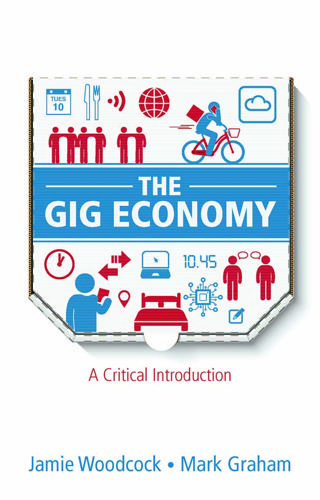
The Gig Economy: A Critical Introduction
by
Jamie Woodcock
and
Mark Graham
Published 17 Jan 2020
Gig economy workers are far less likely than workers in traditional waged employment to pay consistent dues to the union, meaning that recruitment is not a solution to the ongoing crisis of membership and funding that many unions face (or will face in the near future). Most mainstream unions also simply do not have the ‘boots-on-the-ground’ understanding needed to organize with gig workers. Successful organizing of these highly distributed workers takes time, commitment and resources. If there is an expectation of a quick return on investment through union dues, organizing in the gig economy does not make immediate sense – an outcome that leads many to argue that gig workers are unorganizable. These kinds of arguments have been made, and proven wrong, before. For example, workers in the car industry in the early twentieth century, as well as those ‘working seasonally across a range of industries’ were ‘regarded as unorganizable’ (McIlroy, 1995: 9).
…
In a world where people are talking about ‘Uber’ as a verb: ‘the Uber for dog walking’, ‘the Uber for doctors’, and even ‘the Uber for drugs’, it is important to understand both the histories and futures of this emerging – and increasingly normalized – model of work. The gig economy naturally has immediate effects on gig workers, but as it develops it will affect work more broadly in profound ways. The rise of the ‘gig economy’ has become symbolic of the way that work is changing. The term refers to the increase in short-term contracts rather than permanent or stable jobs. It has been touted by many as offering much greater flexibility for workers, employers and customers, rather than the stifling nature of some traditional employment contracts.
…
It is this lack of power that workers have relative to their employers that is one of the reasons why workers in many industries have traditionally grouped together in trade unions. A group of workers is much better equipped to collectively negotiate with their employer, or other powerful actors in the value chains of work, than a single one is. Yet, in most countries, the existing trade union movement lacks effective strategies to organize gig workers. As there are an increasing number of workers finding employment through platforms, the relative lack of collective voice for platform workers poses important questions about their ability to collectively organize and bargain with platforms and employers. There are exciting examples of new forms of worker organizing on platforms that offer geographically tethered work – for example, the Deliveroo struggles taking place across multiple European countries, or the attempts by platform delivery drivers across Africa and Asia to collectively demand better working conditions.

The Alternative: How to Build a Just Economy
by
Nick Romeo
Published 15 Jan 2024
US Government Accountability Office, “Contingent Workforce: BLS Is Reassessing Measurement of Nontraditional Workers,” January 29, 2019, https://www.gao.gov/products/gao-19-273r; and Scribd, “10.26.17 GAO Report on Gig Workers and Skills,” accessed December 13, 2022, https://www.scribd.com/document/362691042/10-26-17-GAO-Report-on-Gig-Workers-and-Skills. 38. Marty Walsh, “America is back to work. And our workforce is growing,” tweet @SecMartyWalsh, Twitter, January 21, 2022, https://mobile.twitter.com/secmartywalsh/status/1484592309563916289. 39. Noam Scheiber, “Biden Proposal Could Lead to Employee Status for Gig Workers,” New York Times, October 11, 2022, https://www.nytimes.com/2022/10/11/business/economy/biden-gig-workers-contractor s-employees.html. 40. Tim Harford, “The Penny Post Revolutionary Who Transformed How We Send Letters,” BBC News, August 13, 2019, https://www.bbc.com/news/business-48844278. 41.
…
In Australia, an Uber Eats driver was fired for allegedly arriving ten minutes late to a delivery, after working ninety-six hours in one week.6 In Europe, 62 percent of gig workers in 2021 worried about how unfair feedback would affect their prospects for future work.7 Across America, 58 percent of full-time gig workers said that they would struggle to come up with $400 in an emergency.8 Responding to such issues, California’s state legislature had in 2019 reclassified some part-time and gig workers—including drivers for Uber, Lyft, and DoorDash—as employees. Prop 22, crafted by the gig-work platforms, exempted app-based companies from the new rule.
…
Gould IV, “Will Voters Side with the Continued Exploitation of Gig Workers?,” Hill, October 15, 2020, https://thehill.com/opinion/finance/521146-will-voters-side-with-the-continued-exploitation-of-gig-workers/. 5. Ken Jacobs and Michael Reich, “What Would Uber and Lyft Owe to the State Unemployment Insurance Fund?,” (data brief), CWED, IRLE, UC Berkeley Labor Center, May 2020, https://laborcenter.berkeley.edu/pdf/2020/What-would-Uber-and-Lyft-owe-to-the-State-Unemployment-Insurance-Fund.pdf. 6. Julian Bingley, “Exploited Gig Workers Need Industry Reform Claims New Flinders University Study,” ZDNET, May 30, 2022, https://www.zdnet.com/article/exploited-gig-workers-need-industry-reform-claims-new-flinders-university-study/. 7.

Humans as a Service: The Promise and Perils of Work in the Gig Economy
by
Jeremias Prassl
Published 7 May 2018
By includ- ing on-demand workers who cannot enjoy the benefits of genuine entrepre- neurship within the scope of employment law, a level playing field is restored: platforms that provide services, rather than mere introductions between inde- pendent contractors and their clients, are recognized as employers, with a duty to pay and protect their on-demand workforce accordingly. * * * Playing by the Rules 105 A Floor of Rights Classifying on-demand platforms as employers and gig workers as their employ- ees will not solve all of the problems identified in previous chapters—but it’s a crucial first step towards tackling some of the most pressing problems facing gig workers, from dangerously long hours to discriminatory algorithms.32 Consider the unpredictability of work and income as an example. We saw how platforms continuously vary all elements of work and pay, from task assignment and prices to commission structures, which makes it very diffi- cult for workers to plan ahead.
…
Matters become more interesting once we turn to the gig economy’s two central claims in refuting traditional employment laws: entrepreneurship and innovation. There is plenty of evidence for elements of both when platforms’ innovative use of technology and matching algorithms enable workers to embark on entrepreneurial careers. But the narrative does not hold true for all gig workers: given the vast heterogeneity of work, the reality is inevitably more complex. Chapter 3, ‘Lost in the Crowd’, explores the entrepreneurship narrative, juxtaposing platforms’ promises of autonomy, freedom, and self-determination with the sobering reality of algorithmic control. Gig work suggests flexibil- ity, yet the business model often requires a tightly curated service.
…
Depending on consumer demand, this means that the promised flexi- bility of on-demand work can quickly turn into economic insecurity, as gig income is highly unpredictable from week to week. The promise of freedom similarly rings hollow for many—not least because of carefully constructed contractual agreements, which ban some gig workers from taking platforms to court. Instead of enjoying the spoils of successful entrepreneurship, a significant * * * Platforms as a Service 9 proportion of on-demand workers find themselves trapped in precarious, low-paid work. The innovation narrative is similarly multifaceted, as we discover in Chapter 4.

Death Glitch: How Techno-Solutionism Fails Us in This Life and Beyond
by
Tamara Kneese
Published 14 Aug 2023
Platform death is a site for remaking life. To fight back against unfair platform labor practices, the worker-led nonprofit Gig Workers Collective, based in the Bay Area, drafted a petition to the U.S. Department of Labor asking gig platform owners to provide occupational death benefits. Gig Workers Collective is led by organizer Vanessa Bain and composed of Instacart and Shipt shoppers and other gig workers from across the industry, many of whom are women of color and mothers. In their petition, Gig Workers Collective included the stories of gig workers who were murdered on the job, a frequent occurrence that points to the dangers of this kind of work: “With our occupational risks of death being higher than first responders, there is no doubt that we need the full host of occupational injury and death protections provided through workers’ compensation.
…
Despite death startup companies’ presentation of self-care as a way of managing mortality, essential workers, many of whom are immigrants or from marginalized groups, are not protected from death. Uber drivers and other gig workers are classified as independent contractors, so if they die from the coronavirus or something else on the job, the company that employs them cannot be held responsible and owes nothing to their family members left behind. In 2020, the Bureau of Labor Statistics reported that gig workers account for nearly one in eight worker deaths in the United States.32 Worker-led groups are pushing platforms to recognize their workers as employees, which also means caring for them and their families after they die.
…
In their petition, Gig Workers Collective included the stories of gig workers who were murdered on the job, a frequent occurrence that points to the dangers of this kind of work: “With our occupational risks of death being higher than first responders, there is no doubt that we need the full host of occupational injury and death protections provided through workers’ compensation. When gig workers die at work we die without security, and often our families must rely on the generosity of strangers and crowdfunding to even cover funeral expenses.”34 The petition declared, “We need the security of guaranteed benefits, crowdsourcing is not a safety net. What happens when the death of a gig worker is not part of national headlines? What is the recourse for grieving families when they’re left to seek damages from some of the wealthiest and most resourced corporations in the nation?”

Stakeholder Capitalism: A Global Economy That Works for Progress, People and Planet
by
Klaus Schwab
Published 7 Jan 2021
See Asian Tigers Fourth Industrial Revolution, 18, 45, 68, 71, 116, 122, 125, 142–145, 161–162, 177, 186, 201, 208, 212, 213, 237, 239 The Fourth Industrial Revolution (Schwab), 116 Foxconn (Taiwan), 59 France Compagnie de Suez join stock company of, 103 First Industrial Revolution spreading to, 131 La France Insoumise populist party of, 81 vote for right-wing populist parties (2000, 2017–2019), 84fig Yellow Vests (Gilets Jaunes) protests of, 86–87, 195 Youth for Climate movement (2017), 86 La France Insoumise (France), 81 The Freelance Isn't Free Law (New York), 243 Freelancers Union (New York), 242–243 Freelancing work, 237–238, 240–243 Freund, Caroline, 138 Frey, Carl, 116, 135 Frick Coke Company, 132 Frick, Henry, 132 Fridays for Climate strikes (2018), 149, 250 Friedman, Milton, 14, 136, 175, 205, 209 Friedrichshafen (Germany), 4–5, 6–7, 8–9, 251 Fukuyama, Francis, 15, 112 “The Future of Employment” study (2013), 116 G G7 countries, social compact breaking down in, 110–111 Gama, Vasco da, 97 Garikipati, Supriya, 224 Gates, Bill, 132 Gazivoda, Tin, 195 GDP (gross domestic product) China's increased total debt–to–GDP ratio, 62 COVID crisis impact on public debt and, 19 description and function of, 9, 24 emerging markets (2002–2019), 64–65fig formula for calculating, 24 New Zealand's COVID-19 response and impact on, 222–223 New Zealand's focus on social issues instead of, 234–236 post-World War II low level of, 105 private sector percentage of China's, 172 Simon Kuznets' warning on progress measured by, 21–25, 34, 46, 53 Singapore (1965–2019), 123–125 stakeholder model going beyond profits and, 189–193 trade globalization measured by percentage of, 16 See also GNI (gross national income); GNP (gross national product) GDP growth declining rates since the 1960s, 25–28 differentiating between global, national, and regional, 27–28 singular focus of policymaking on, 25 as “war-time metric,” 25 Gender pay equity, 243 Gender representation advocacy of, 243–244 Ireland's experiment in, 194 as stakeholder model issue, 188–189 General Data Protection Regulation (European Union), 212 General-purpose technologies (GPTs), 143 Generation Z workers, 240 German reunification, 17, 78 Germany Berlin Wall (1961–1989) dividing, 75–77, 88, 89 Christian–Democrats (CDU) political party of, 78, 79 erosion of the political center in, 80–90 extreme views replacing Volksparteien, 80, 83 female-led government leadership during COVID-19 pandemic in, 224 First Industrial Revolution spreading to, 131 following the First World War, 4 growing populism and polarizing politics (2020) in, 79, 87–88 Hartmann machine works (Chemnitz, Kingdom of Saxony), 103fig integration of East and West, 17, 78 lowering debt burden through economic growth, 31 neo-Nazi elements protesting COVID-19 responses, 87 reconstruction of post-war economy and society, 3, 7–11, 251 social reforms (1880s) in, 133 Social–Democrats (SPD) political party of, 78, 80–81 stakeholder concept adopted in, 174 “Stunde Null” (or “Zero Hour”) [May 8, 1945] ending the war, 5 vote for right-wing populist parties (2000, 2017–2019), 84fig well-managed COVID crisis response in, 79 See also East Germany; West Germany Ghana, 27, 70 Gig workers, 187–188, 237–238, 240–243 Gig Workers Rising (California), 241 Gig worker strike (2019), 187 Gig Workers United (California), 241 The Gilded Age: A Tale of Today (Twain and Warner), 133 Gini coefficient of China/India, 37fig–38, 226 Global Competitiveness Index (World Economic Forum), 189, 190 Global debt population pyramid and repayment of, 30 problem of rising, 28–31 what is included in, 28 Global economic growth ASEAN nations, 63–66, 67fig “the Asian Century,” 70–71fig Chinese economy impacting, 63–66, 70–72 declining productivity growth impact on, 33–34 Elephant Curve of Global Inequality and Growth graph, 137–138fig foundations of the post-war, 4–7 India, 66, 67–69 low GDP growth impact on, 25–28 low-interest rates and low inflation impact on, 31–33 post-World War II expansion of the, 3, 7–11, 251 rising debt impact on, 28–31 the tumultuous 1970s and 1980s, 11–15 Global economic order Davos Manifesto (1973) on new direction for, 13–14, 88, 213 impact of income inequality on the, 36–41 impact of the COVID-19 pandemic on the, 108 requirements of a post-COVID world and, 251 SARS–CoV–2 vaccines development and possible “Great Reset” of, 248 understanding the foundations of post-war, 4–7 Global financial crisis (2007–2009), 18, 34, 112–113, 122 Global Footprint Network (GFN), 19, 48fig–49 Global Infrastructure Hub, 32 Globalists, The End of Empire and the Birth of Neoliberalism (Slobodian), 181 Globalization adverse effects of, 107, 110–114 current state of, 108–114 description and implications of, 16 early beginnings and spice routes history of, 99–108 economic decline beginning in 2007, 18–19 GDP measure of trade, 16 New York Times op–ed (Schwab) on, 85 as political ideology, 108 reasons for embracing, 114 success stories from Indonesia, 93–99 three conditions required for positive, 109–110 YouGov–Bertelsmann poll (2018) on, 97 Globalization 4.0, 106–108 Globalization conditions balanced political leadership, 109–110 when functioning as social compact, 109, 110–111 when technology is congruent with economic and societal advantages, 110 Globalization history Age of Discovery (15th to 18th century), 100–102 first wave (19th century–1914), 102–105 globalization 4.0, 106–108 lessons learned from, 108–114 second and third wave (20th century), 105–106 Silk Road and spice routes, 99–102 Global population.
…
As one media report showed, such graduates end up dreaming of earning $2,000 a month or more telecommuting.49 But they may not immediately realize they're in a more vulnerable position than salaried workers, as they don't have long-term contracts, benefits, or legal protection, including against unemployment. This shouldn't lead though to despair but rather to a new form of unionizing workers and international collaboration. A good place to start is probably with those gig workers who work exclusively for one platform or in one industry, such as drivers. It is what the Independent Drivers Guild in New York and Gig Workers Rising in California do. Both groups gather drivers who work primarily for Uber, Lyft, and other similar platforms and advocate for “better wages, working conditions, and respect.”50 It has led to some structural changes in the status and treatments of such drivers.
…
See AT&T Belt and Road Initiative (China), 100 Benioff, Marc, 164, 201, 207, 207–208, 210, 211, 212–213 Berkshire Hathaway Energy (US), 218 Berlin Wall (1961–1989), 75–77, 88, 89 Berlusconi, Silvio, 83 Better Life Index (OECD), 190 Bezos, Jeff, 132 Bhutto, Bhenazir, 245 Bhutto, Bilawal, 245 Big Four (Deloitte, EY, KPMG, and PwC), 215, 250 Big Tech Benioff's call for European regulators to break up, 211 lacking core values of the past, 208 monopolies of, 127–129, 140–142, 145, 211 shift toward stakeholder model approach by, 201–202 tech unicorns of ASEAN nations, 66, 67fig widening inequalities, 210 See also Silicon Valley; US economy The Billionaire Raj (Crabtree), 40 Biodiversity Amazon Rainforest, 107 Anthropocene label on human responsibility for, 161 fossil fuels accelerating loss of, 49 Global Risks Report (2020) on losses in, 52 looking for solutions to stop loss of, 165 Platform on Biodiversity and Ecosystems Services (IPBES) report [2019], 51 Bismarck, Otto von, 133 Bivens, Josh, 122 Black Lives Matter, 186, 243, 246, 250 BlackRock (US), 164, 215, 216 Bloomberg, 163, 177 BMW (German manufacturer), 9 BNY–Mellon, 132 Bolivia, 225 Bolsonaro, Jair, 84, 85 Bombardier (Canada), 142 Booking (US), 97 Boston Consulting Group, 167 BP Statistical Review of World Energy (2019), 49 BP Statistical Review of World Energy (2020), 63 Brandenburg Gate (East Berlin), 76–77, 79, 89–90 Brazil dropping voter turnout for elections in, 188 erosion of political center in, 84, 85 income inequality in, 40 mining exports to China, 64 “21st century socialism” of, 225 Brexit vote (2016), 80 Brookings Institution, 70 Brooks, Robin, 27 Bruegel Institute, 36, 37, 112 Bryan, William Jennings, 133 Brynjolfsson, Eric, 143 B Team Responsible Tax Principles, 205 Buffet, Warren, 218 Bundesrepublik Deutschland (BRD). See West Germany BYD (“Build Your Dreams”), 60 ByteDance, 61 C Caballero, Sandra, 163–164 California efforts to reduce emissions in, 167 Gig Workers Rising in, 241 Proposition C proposing tax to help the homeless, 212–213 rejected Proposition (2020) designating gig workers as employees, 187–188 Rideshare Drivers United advocacy group, 187 See also United States Capital in the Twenty-First Century (Piketty), 38 Capitalism the golden age (1945–early 1970s) of, 8 history of medieval, 131 ideological battle between communism and, 7 Marc Benioff's speech (2020) on, 164, 211 productivity growth during golden age of, 33–34 shareholder, 171–172, 173 state, 171, 172–173, 193 See also Stakeholder capitalism Capitalism, Alone (Milanovic), 173 Carbon footprints finding hope for lowering, 159 no magic formula for lowering, 157 Paris Agreement aim to lower, 150, 165, 182, 183, 189, 198 urbanization and increased, 159–160 Carnegie, Andrew, 132 Carnegie Hall, 132 Carney, Mark, 162 Carroll, Aaron E., 231 Case, Anne, 42 Castro, Fidel, 76 Central European University, 113 Central European Warsaw Pact, 77 CEO Climate Leaders, 167 Checks and balances, 185, 193–198 Chevron, 134 Chiang Kai-shek, 56 Chicago School, 14, 136, 140 Chile copper exports, 64 China (People's Republic) age/gender representation political issues in, 188 becoming an upper-middle-income country, 36 Chinese Dream in, 184 city of Shenzhen of, 55, 57–61 continued trust in public institutions in, 196 demographic changes in, 161 one-child policy of, 161 People's Republic established by CPC, 56–57 Sham Chun River in, 55, 61 World Inequality Lab (WIL) on rising inequality in, 72–73fig World Trade Organization membership of, 18 WTO membership of, 18, 59, 64 ZF Drivetech Co.
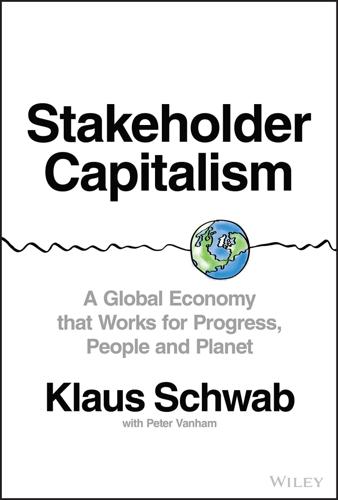
Stakeholder Capitalism: A Global Economy That Works for Progress, People and Planet
by
Klaus Schwab
and
Peter Vanham
Published 27 Jan 2021
See Asian Tigers Fourth Industrial Revolution, 18, 45, 68, 71, 116, 122, 125, 142–145, 161–162, 177, 186, 201, 208, 212, 213, 237, 239 The Fourth Industrial Revolution (Schwab), 116 Foxconn (Taiwan), 59 France Compagnie de Suez join stock company of, 103 First Industrial Revolution spreading to, 131 La France Insoumise populist party of, 81 vote for right-wing populist parties (2000, 2017–2019), 84fig Yellow Vests (Gilets Jaunes) protests of, 86–87, 195 Youth for Climate movement (2017), 86 La France Insoumise (France), 81 The Freelance Isn't Free Law (New York), 243 Freelancers Union (New York), 242–243 Freelancing work, 237–238, 240–243 Freund, Caroline, 138 Frey, Carl, 116, 135 Frick Coke Company, 132 Frick, Henry, 132 Fridays for Climate strikes (2018), 149, 250 Friedman, Milton, 14, 136, 175, 205, 209 Friedrichshafen (Germany), 4–5, 6–7, 8–9, 251 Fukuyama, Francis, 15, 112 “The Future of Employment” study (2013), 116 G G7 countries, social compact breaking down in, 110–111 Gama, Vasco da, 97 Garikipati, Supriya, 224 Gates, Bill, 132 Gazivoda, Tin, 195 GDP (gross domestic product) China's increased total debt–to–GDP ratio, 62 COVID crisis impact on public debt and, 19 description and function of, 9, 24 emerging markets (2002–2019), 64–65fig formula for calculating, 24 New Zealand's COVID-19 response and impact on, 222–223 New Zealand's focus on social issues instead of, 234–236 post-World War II low level of, 105 private sector percentage of China's, 172 Simon Kuznets' warning on progress measured by, 21–25, 34, 46, 53 Singapore (1965–2019), 123–125 stakeholder model going beyond profits and, 189–193 trade globalization measured by percentage of, 16 See also GNI (gross national income); GNP (gross national product) GDP growth declining rates since the 1960s, 25–28 differentiating between global, national, and regional, 27–28 singular focus of policymaking on, 25 as “war-time metric,” 25 Gender pay equity, 243 Gender representation advocacy of, 243–244 Ireland's experiment in, 194 as stakeholder model issue, 188–189 General Data Protection Regulation (European Union), 212 General-purpose technologies (GPTs), 143 Generation Z workers, 240 German reunification, 17, 78 Germany Berlin Wall (1961–1989) dividing, 75–77, 88, 89 Christian–Democrats (CDU) political party of, 78, 79 erosion of the political center in, 80–90 extreme views replacing Volksparteien, 80, 83 female-led government leadership during COVID-19 pandemic in, 224 First Industrial Revolution spreading to, 131 following the First World War, 4 growing populism and polarizing politics (2020) in, 79, 87–88 Hartmann machine works (Chemnitz, Kingdom of Saxony), 103fig integration of East and West, 17, 78 lowering debt burden through economic growth, 31 neo-Nazi elements protesting COVID-19 responses, 87 reconstruction of post-war economy and society, 3, 7–11, 251 social reforms (1880s) in, 133 Social–Democrats (SPD) political party of, 78, 80–81 stakeholder concept adopted in, 174 “Stunde Null” (or “Zero Hour”) [May 8, 1945] ending the war, 5 vote for right-wing populist parties (2000, 2017–2019), 84fig well-managed COVID crisis response in, 79 See also East Germany; West Germany Ghana, 27, 70 Gig workers, 187–188, 237–238, 240–243 Gig Workers Rising (California), 241 Gig worker strike (2019), 187 Gig Workers United (California), 241 The Gilded Age: A Tale of Today (Twain and Warner), 133 Gini coefficient of China/India, 37fig–38, 226 Global Competitiveness Index (World Economic Forum), 189, 190 Global debt population pyramid and repayment of, 30 problem of rising, 28–31 what is included in, 28 Global economic growth ASEAN nations, 63–66, 67fig “the Asian Century,” 70–71fig Chinese economy impacting, 63–66, 70–72 declining productivity growth impact on, 33–34 Elephant Curve of Global Inequality and Growth graph, 137–138fig foundations of the post-war, 4–7 India, 66, 67–69 low GDP growth impact on, 25–28 low-interest rates and low inflation impact on, 31–33 post-World War II expansion of the, 3, 7–11, 251 rising debt impact on, 28–31 the tumultuous 1970s and 1980s, 11–15 Global economic order Davos Manifesto (1973) on new direction for, 13–14, 88, 213 impact of income inequality on the, 36–41 impact of the COVID-19 pandemic on the, 108 requirements of a post-COVID world and, 251 SARS–CoV–2 vaccines development and possible “Great Reset” of, 248 understanding the foundations of post-war, 4–7 Global financial crisis (2007–2009), 18, 34, 112–113, 122 Global Footprint Network (GFN), 19, 48fig–49 Global Infrastructure Hub, 32 Globalists, The End of Empire and the Birth of Neoliberalism (Slobodian), 181 Globalization adverse effects of, 107, 110–114 current state of, 108–114 description and implications of, 16 early beginnings and spice routes history of, 99–108 economic decline beginning in 2007, 18–19 GDP measure of trade, 16 New York Times op–ed (Schwab) on, 85 as political ideology, 108 reasons for embracing, 114 success stories from Indonesia, 93–99 three conditions required for positive, 109–110 YouGov–Bertelsmann poll (2018) on, 97 Globalization 4.0, 106–108 Globalization conditions balanced political leadership, 109–110 when functioning as social compact, 109, 110–111 when technology is congruent with economic and societal advantages, 110 Globalization history Age of Discovery (15th to 18th century), 100–102 first wave (19th century–1914), 102–105 globalization 4.0, 106–108 lessons learned from, 108–114 second and third wave (20th century), 105–106 Silk Road and spice routes, 99–102 Global population.
…
As one media report showed, such graduates end up dreaming of earning $2,000 a month or more telecommuting.49 But they may not immediately realize they're in a more vulnerable position than salaried workers, as they don't have long-term contracts, benefits, or legal protection, including against unemployment. This shouldn't lead though to despair but rather to a new form of unionizing workers and international collaboration. A good place to start is probably with those gig workers who work exclusively for one platform or in one industry, such as drivers. It is what the Independent Drivers Guild in New York and Gig Workers Rising in California do. Both groups gather drivers who work primarily for Uber, Lyft, and other similar platforms and advocate for “better wages, working conditions, and respect.”50 It has led to some structural changes in the status and treatments of such drivers.
…
See AT&T Belt and Road Initiative (China), 100 Benioff, Marc, 164, 201, 207, 207–208, 210, 211, 212–213 Berkshire Hathaway Energy (US), 218 Berlin Wall (1961–1989), 75–77, 88, 89 Berlusconi, Silvio, 83 Better Life Index (OECD), 190 Bezos, Jeff, 132 Bhutto, Bhenazir, 245 Bhutto, Bilawal, 245 Big Four (Deloitte, EY, KPMG, and PwC), 215, 250 Big Tech Benioff's call for European regulators to break up, 211 lacking core values of the past, 208 monopolies of, 127–129, 140–142, 145, 211 shift toward stakeholder model approach by, 201–202 tech unicorns of ASEAN nations, 66, 67fig widening inequalities, 210 See also Silicon Valley; US economy The Billionaire Raj (Crabtree), 40 Biodiversity Amazon Rainforest, 107 Anthropocene label on human responsibility for, 161 fossil fuels accelerating loss of, 49 Global Risks Report (2020) on losses in, 52 looking for solutions to stop loss of, 165 Platform on Biodiversity and Ecosystems Services (IPBES) report [2019], 51 Bismarck, Otto von, 133 Bivens, Josh, 122 Black Lives Matter, 186, 243, 246, 250 BlackRock (US), 164, 215, 216 Bloomberg, 163, 177 BMW (German manufacturer), 9 BNY–Mellon, 132 Bolivia, 225 Bolsonaro, Jair, 84, 85 Bombardier (Canada), 142 Booking (US), 97 Boston Consulting Group, 167 BP Statistical Review of World Energy (2019), 49 BP Statistical Review of World Energy (2020), 63 Brandenburg Gate (East Berlin), 76–77, 79, 89–90 Brazil dropping voter turnout for elections in, 188 erosion of political center in, 84, 85 income inequality in, 40 mining exports to China, 64 “21st century socialism” of, 225 Brexit vote (2016), 80 Brookings Institution, 70 Brooks, Robin, 27 Bruegel Institute, 36, 37, 112 Bryan, William Jennings, 133 Brynjolfsson, Eric, 143 B Team Responsible Tax Principles, 205 Buffet, Warren, 218 Bundesrepublik Deutschland (BRD). See West Germany BYD (“Build Your Dreams”), 60 ByteDance, 61 C Caballero, Sandra, 163–164 California efforts to reduce emissions in, 167 Gig Workers Rising in, 241 Proposition C proposing tax to help the homeless, 212–213 rejected Proposition (2020) designating gig workers as employees, 187–188 Rideshare Drivers United advocacy group, 187 See also United States Capital in the Twenty-First Century (Piketty), 38 Capitalism the golden age (1945–early 1970s) of, 8 history of medieval, 131 ideological battle between communism and, 7 Marc Benioff's speech (2020) on, 164, 211 productivity growth during golden age of, 33–34 shareholder, 171–172, 173 state, 171, 172–173, 193 See also Stakeholder capitalism Capitalism, Alone (Milanovic), 173 Carbon footprints finding hope for lowering, 159 no magic formula for lowering, 157 Paris Agreement aim to lower, 150, 165, 182, 183, 189, 198 urbanization and increased, 159–160 Carnegie, Andrew, 132 Carnegie Hall, 132 Carney, Mark, 162 Carroll, Aaron E., 231 Case, Anne, 42 Castro, Fidel, 76 Central European University, 113 Central European Warsaw Pact, 77 CEO Climate Leaders, 167 Checks and balances, 185, 193–198 Chevron, 134 Chiang Kai-shek, 56 Chicago School, 14, 136, 140 Chile copper exports, 64 China (People's Republic) age/gender representation political issues in, 188 becoming an upper-middle-income country, 36 Chinese Dream in, 184 city of Shenzhen of, 55, 57–61 continued trust in public institutions in, 196 demographic changes in, 161 one-child policy of, 161 People's Republic established by CPC, 56–57 Sham Chun River in, 55, 61 World Inequality Lab (WIL) on rising inequality in, 72–73fig World Trade Organization membership of, 18 WTO membership of, 18, 59, 64 ZF Drivetech Co.

Essential: How the Pandemic Transformed the Long Fight for Worker Justice
by
Jamie K. McCallum
Published 15 Nov 2022
Cobbled together from a group of local shopkeepers, students, and a trade union of couriers, the organization filled a clear mission while also deepening the social fabric of the city that was rent asunder by COVID.7 When the pandemic hit the US, American essential workers also formed mutual aid societies to provide goods and services not supplied by the government or corporations. Gig workers in delivery and transportation industries developed apps to help each other learn how to respond to the neediest situations first, sometimes bucking priorities from the likes of Uber and Lyft. The Gig Workers Collective created a simple map that allows drivers to coordinate mutual aid activities like food delivery and medical personnel transport. “Between the lack of financial security (no sick leave), the number of workers living week to week, and the inability for some workers to take time off due to low income, gig workers are some of the most vulnerable dealing with the COVID-19 outbreak,” their website stated.8 Factory workers in Marcus Hook, Pennsylvania, moved into the Braskem petrochemical plant on March 23, 2020, with sleeping bags and toothbrushes.
…
The entire rideshare economy—where drivers are independent contractors and not employees of Uber, Lyft, etc.—is an example of a fissured industry. Many gig workers slogged through the pandemic, but most of their services were rendered impossible during the lockdown phase. As they trickled back to work, they found themselves facing a new employment reality. In November 2020, California voters faced Proposition 22. Drafted by major gig company lawyers, its aim was to escape a 2018 state law that classified gig workers as employees rather than independent contractors. UC Berkeley polling had shown that just a year earlier, a mere 39 percent of Californians supported Prop 22.
…
The most expensive ballot measure campaign in American history: gig companies spent $218 million to promote the legislation, a total that, as the Los Angeles Times pointed out, amounts to $630,000 per day.37 It is no wonder, then, that the gig companies’ campaign could flood advertising venues and ultimately crush its opponents, whose funds totaled a comparatively paltry $15 million.38 This endless stream of cash allowed gig companies to monopolize the public conversation and successfully co-opt the message of their opposition. This vote came with serious consequences for gig workers, but it also created the potential to ripple across the entire economy. The law created a new employment category: “the contract gig worker.”39 Even if other businesses don’t start their own fight at the ballot box, they can still take full advantage of this new labor category. In January 2021, for example, grocery chains Vons, Pavilions, and Albertsons came to an agreement with DoorDash to fire their delivery staff—which had previously worked full-time with benefits—and replace them with an army of subcontracted “Dashers.”40 However, just months after the vote, a superior court in California struck down Prop 22 as unconstitutional, which its opponents had long argued.

Exponential: How Accelerating Technology Is Leaving Us Behind and What to Do About It
by
Azeem Azhar
Published 6 Sep 2021
In the developed world, what the pro-gig-work crowd normally focuses on is flexibility. A gig worker can work when they want rather than under the permanent subordination of an employment contract. Lyft and Uber drivers show remarkable levels of satisfaction with the flexible work set-up: 71 per cent of drivers want to remain independent contractors, albeit down from 81 per cent prior to the Covid-19 pandemic. When asked what is most important to them, drivers ranked pay and flexible schedule as their top priorities.53 In a similar vein, a 2018 British government survey reckoned that more than half of gig workers were satisfied with the independence and flexibility provided by their jobs.54 If gig work is generally more flexible and less formal in richer countries, the reverse is often true in poorer ones.
…
One way this power imbalance manifests is through low pay. The British government’s survey from 2018 concluded that nearly two-fifths of gig workers earned less than the equivalent of £8.44 per hour, only a little over the British national minimum wage.56 Low pay in the gig economy is also common in the EU. Platform workers in Germany make 29 per cent less than the local statutory minimum wage, while workers in France make 54 per cent less than its minimum wage.57 Because gig workers often have to meet their own expenses – repairs, fuel, even uniforms – take-home pay can get squeezed. One study from the Massachusetts Institute of Technology estimated that the average Uber driver makes a profit of $3.37 per hour.
…
A report by the UK’s human resources trade body, CIPD, found that 45 per cent of employees believe that monitoring is currently taking place in their workplace.70 The issue is not just surveillance, but wider forms of automated management. Workers on platform apps have diminishing control over how they work. When dozens of gig workers for Uber Eats gathered outside the company’s office in south London in 2016 to protest, they were not only criticising their low pay. They were questioning the core of what makes the gig economy giants, especially ride-hailing companies, successful: algorithmic management. ‘We are people, not Uber’s tools,’ they yelled. These people and millions of other gig workers are managed by computers. Their work is scrutinised through a stream of quantitative performance assessments. Rideshare drivers may only have 10–20 seconds to respond to an offered ride, without knowing in advance where they’re expected to go or how much they can expect to make.
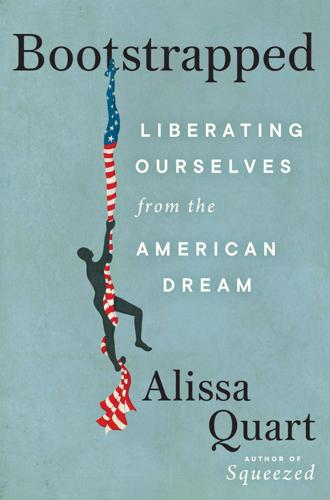
Bootstrapped: Liberating Ourselves From the American Dream
by
Alissa Quart
Published 14 Mar 2023
“I worked double shifts and wore through my shoes, outspent 10:1 to get elected.” But even with all that hard work, she continued, “it would be narcissistic to pretend I ‘bootstrapped’ it alone.” In addition, activist and labor groups reflecting this community-first philosophy have grown in power in the midst of the pandemic, from gig worker collectives to volunteer citizens’ groups. These citizens’ organizations embody the richness that comes from knowing how to rely on one another rather than going it solo. What is often forgotten in this dialectic of doing it alone versus grassroots solidarity is that there is still yet another way: governmental solutions that far exceed what we can accomplish on our own in self-organized groups.
…
Bain, when I first spoke to her, was working a gig job that is sometimes referred to as a “hustle,” or a “side hustle,” if it takes up a smaller slice of a person’s overall hours. While hustling, like “pulling yourself up by your bootstraps,” had become an aspiration, sold as one element of how one achieves the American Dream, it was also filled with difficulties. There were an estimated fifty-seven million gig workers, shopping, fixing, driving, and delivering. Before she felt put at risk, Bain said she loved what she did, that when “you shop for the same customers, so you establish relationships.” She worked at her own pace and was able to pick up her daughter from school and felt like the job suited her. She also felt that she and others in her line of work were purveying basic social services for some customers, including those who were disabled or housebound.
…
Bain was mad about it, and she knew she would have to do something about it. She posted heckles like “We really doing this dance again, Instacart?” She remained vigilant. A few years before, Bain, a college graduate, had started an Instacart grassroots advocacy network, first through Facebook and the nonprofit group Gig Workers Collective. How could companies keep them as “independent contractors rather than employees with full benefits” when a disease was rampant, she wondered out loud. * * * One of the ways that gig companies have been able for years to define their workers as independent contractors is by exploiting the allure of individualism.

Blood in the Machine: The Origins of the Rebellion Against Big Tech
by
Brian Merchant
Published 25 Sep 2023
The report was commissioned by the Strategic Organizing Center (SOC). 9. When he was declared dead Michael Sainato, “‘Go Back to Work’: Outcry over Deaths on Amazon’s Warehouse Floor,” Guardian, October 18, 2019. Gig Workers Rising 1. “I hope Tammy didn’t fall asleep” I have attended a number of protests and strike actions with gig workers in Los Angeles and San Francisco and spoken with numerous workers and organizers about the growing movement. I joined the Gig Workers Rising on a Zoom call on Election Night 2020 as the results for Prop 22 came in. 2. But the reason pay was so high In one particularly striking example, Uber raised $3.5 billion from Saudi Arabia’s Sovereign Wealth Fund in 2016. 3.
…
They shared tips and strategies on Reddit and online message boards, undertook informal efforts like coordinating with each other to decline rides at a given location until the app’s algorithm offered them fairer prices, and formed groups like Gig Workers Rising and Rideshare Drivers United. Workers in a line of employment strictly designed to keep them isolated began to meet up. They forged solidarity, staged protests, and eventually held daylong strikes. A new, distributed kind of movement for gig workers’ rights was born. They were acting, essentially, as the cloth workers had in the ten years before they became Luddites—pushing for better conditions and for legislators to enshrine protections into law.
…
ISBN 978-0-316-48773-3 E3-20230719-JV-NF-ORI CONTENTS Cover Title Page Copyright Dedication Epigraph Persons of Interest The Machinery A Brief Note on Sources Introduction PRELUDE Power Looms Edmund Cartwright, 1786 Mary Godwin, 1797 Robert Blincoe, 1799 Ned Ludd, 1803 PART I The Great Comet George Mellor, Spring 1811 Gravener Henson, March 1811 The Machine Breakers, March 1811 The Entrepreneurs, 1800s The Prince Regent, Summer 1811 George Mellor, Summer 1811 The Machinery Question, 1800s Ned Ludd, Fall 1811 Lord Byron, Fall 1811 George Mellor, Fall 1811 Ned Ludd, November 1811 The Prince Regent, November 1811 William Horsfall, Fall 1811 B, November 1811 Ned Ludd and the Prince Regent, December 1811 George Mellor, Christmas Day 1811 Robert Blincoe, 1811 The First Tech Titans PART II Metropolis of Discontent George Mellor, Winter 1812 Anna Lætitia Barbauld, February 1812 Ned Ludd, Winter 1812 Gravener Henson, February 1812 B, February 1812 George Mellor versus John Booth, Winter 1812 Mary Godwin, February 1812 Richard Ryder, February 14, 1812 The Prince, February 1812 Lord Byron, Winter 1812 Ned Ludd, Winter 1812 Lord Byron, February 27, 1812 Ned Ludd, February 27, 1812 William Horsfall, February 27, 1812 George Mellor and Ned Ludd, March 1812 Lord Byron, March 1812 George Mellor and Ned Ludd, March 1812 Two Centuries of Disruption PART III Breaking Frames, Breaking Bones The Prince Regent, Spring 1812 William Godwin and Percy Bysshe Shelley, March 1812 George Mellor, Spring 1812 B and the Spies, April 1812 William Horsfall, Spring 1812 Lord Byron, Spring 1812 The Battle of Rawfolds Mill, April 1812 William Cartwright, April 1812 Gravener Henson, April 1812 Lady Ludd, Spring and Summer 1812 Insurrection, April 1812 George Mellor, April 1812 Ned Ludd, April 1812 William Horsfall, April 28, 1812 An Involuntary Machine, 1800s PART IV More Value than Work or Gold The Prime Minister, May 1812 Lord Byron, May 1812 Captain Francis Raynes, May 1812 B, May 1812 George Mellor, May 1812 Ned Ludd, June 1812 Gravener Henson, June 1812 Mary Godwin, Summer 1812 Edmund Cartwright, June 1812 The Prince Regent, June 1812 Ned Ludd, July 1812 Gravener Henson, July 1812 George Mellor, Fall 1812 Lady Ludd, Fall 1812 B, Fall 1812 Captain Francis Raynes, Fall 1812 Mary Godwin, November 1812 Lord Byron, Winter 1812 Gravener Henson, Winter 1812 Ned Ludd, Winter 1812 The Trial, January 1813 Betrayal No Confession I Forgive Ned Ludd on Trial The Invention of the Luddites The Prince Regent, February 1813 George Mellor, February 1813 Robert Blincoe, 1813 What the Entrepreneurs Won, June 1813 Gravener Henson, Winter 1813 Charles Ball, 1813 Lord Byron PART V The Modern Prometheus Frankenstein, 1816 The Luddites, or The Modern Prometheus What the Luddites Won Fear Factories PART VI The Owners of the New Machine Age Douglas Schifter, 2018 The Great Comet Returns The New Tech Titans, 2018 Fear Factories Redux, March 2020 Gig Workers Rising, November 2020 The New Luddites Christian Smalls, June 2022 Douglas Schifter, 2018 Afterword Are the Robots Coming for Our Jobs? How Uprisings Against Big Tech Begin Acknowledgments Discover More About the Author Also by Brian Merchant Selected Bibliography Notes For Russell, Aldus, and Corrina—now and future machine breakers.

The Raging 2020s: Companies, Countries, People - and the Fight for Our Future
by
Alec Ross
Published 13 Sep 2021
To guarantee workers a share in the economic prosperity to come in the 2020s, we need to explore models of pay and benefits that are as flexible as their jobs. We cannot solve the labor problem on a company-by-company basis. In a letter to the New York Times entitled “I am the CEO of Uber. Gig Workers Deserve Better,” Uber CEO Dara Khosrowshahi wrote, “There has to be a ‘third way’ for gig workers, but we need to get specific, because we need more than new ideas—we need new laws. Our current system is binary, meaning that each time a company provides additional benefits to independent workers, the less independent they become. That creates more uncertainty and risk for the company, which is a main reason why we need new laws and can’t act entirely on our own.”
…
less than 2 percent of the US labor force: “Electronically Mediated Work: New Questions in the Contingent Worker Supplement,” Monthly Labor Review, US Bureau of Labor Statistics, September 2018, https://www.bls.gov/opub/mlr/2018/article/electronically-mediated-work-new-questions-in-the-contingent-worker-supplement.htm; “How Many Gig Workers Are There?,” Gig Economy Data Hub, Aspen Institute Future of Work Initiative and Cornell University ILR School, https://www.gigeconomydata.org/basics/how-many-gig-workers-are-there. On August 22, 2017, more than one hundred: Marie Targonski-O’Brien, “Uber, Lyft Drivers Crowd LAX, Protest Low Pay,” KCET, August 22, 2017, https://www.kcet.org/shows/socal-connected/uber-lyft-drivers-crowd-lax-protest-low-pay.
…
Uber has more than 3.9 million drivers: “Company Info,” Uber, accessed May 21, 2020, https://www.uber.com/newsroom/company-info/; Steve Minter, “Who Are the World’s Biggest Employers?” IndustryWeek, June 24, 2015, https://www.industryweek.com/talent/article/21965429/who-are-the-worlds-biggest-employers. “There has to be”: Dara Khosrowshahi, “I Am the C.E.O. of Uber. Gig Workers Deserve Better,” New York Times, August 10, 2020, https://www.nytimes.com/2020/08/10/opinion/uber-ceo-dara-khosrowshahi-gig-workers-deserve-better.html%20?. Organized labor is in Sara Horowitz’s blood: David Gelles, “To Guide the Labor Movement’s Future, She Looks to Its Past,” New York Times, January 9, 2020, https://www.nytimes.com/2020/01/09/business/sara-horowitz-trupo-corner-office.html; Tejal Rao, “A Decade On, Freelancers Union Founder Sara Horowitz Takes Her Fight Mainstream,” Village Voice, February 13, 2013, https://www.villagevoice.com/2013/02/13/a-decade-on-freelancers-union-founder-sara-horowitz-takes-her-fight-mainstream/.
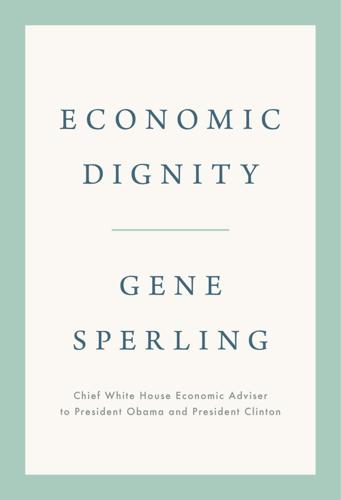
Economic Dignity
by
Gene Sperling
Published 14 Sep 2020
Ahead of IPO, Early Protests Sparse,” Reuters, May 8, 2019, https://www.reuters.com/article/us-uber-ipo-strike/uber-drivers-go-on-strike-in-london-and-u-s-ahead-of-ipo-early-protests-sparse-idUSKCN1SE0A5. 51. Alejandro Lazo, “California Enacts Law to Classify Some Gig Workers as Employees,” Wall Street Journal, updated September 18, 2019, https://www.wsj.com/articles/california-enacts-law-to-classify-some-gig-workers-as-employees-11568831719. 52. Lazo, “California Enacts Law to Classify Some Gig Workers as Employees.” 53. Quentin R. Skrabec Jr., The 100 Most Significant Events in American Business: An Encyclopedia (Santa Barbara, CA: Greenwood, 2012), 206. 54. Mark Barenberg, “Widening the Scope of Worker Organizing: Legal Reforms to Facilitate Multi-employer Organizing, Bargaining, and Striking,” Roosevelt Institute, October 7, 2015, 1, 3, http://rooseveltinstitute.org/wp-content/uploads/2015/10/Widening-the-Scope-of-Worker-Organizing.pdf. 55.
…
Under the NLRA, only workers considered employees and not independent contractors are guaranteed the right to organize. Being classified as a contractor, as gig workers like Uber workers are, impacts not only your benefits but your federal right to unionize or collectively bargain as well. Reforms to federal law to reduce misclassification, such as the PRO Act, and to expressly give independent contractors the right to unionize are required to address this issue nationwide. While California’s new law—Assembly Bill 5 (AB5), or the “gig worker bill”—instituted a stricter test for classifying a worker as an independent contractor for the purposes of California state law, it does not itself create a right to unionize for workers considered independent contractors under federal law.51 Governor Gavin Newsom and worker advocates are now seeking to use the passage of the law as leverage to craft a deal that would give workers the right to organize under California state law.52 However, these kinds of legislative changes will not be enough to address the plight of all workers excluded from unions.
…
After Asking for It, She Lost Her Job,” Washington Post, August 14, 2015, https://www.washingtonpost.com/news/wonk/wp/2015/08/14/she-thought-she-was-entitled-to-maternity-leave-after-asking-for-it-she-lost-her-job/. 9. “California Approves Bill That Will Turn Gig Workers into Employees,” CBS News, September 11, 2019, https://www.cbsnews.com/news/ab5-bill-passes-california-approves-ab5-bill-that-will-turn-uber-lyft-gig-workers-into-employees/. 10. The goal here is not to create a middle or “hybrid” new worker classification as some have called for, but rather to work toward a day when work—however it is done—carries with it the same basic economic dignity net. 11.
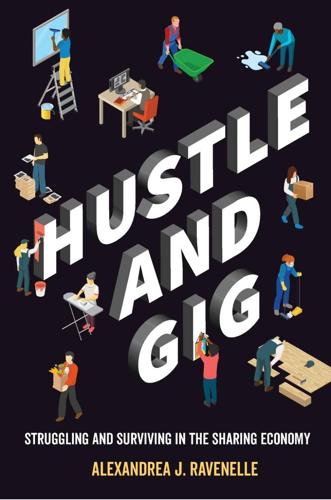
Hustle and Gig: Struggling and Surviving in the Sharing Economy
by
Alexandrea J. Ravenelle
Published 12 Mar 2019
My concluding chapter provides interviews with the leaders of services who are working to change the sharing economy status quo by paying their workers a living wage and providing benefits and workplace protections. I also provide policy recommendations on how to best address the differing challenges experienced by Strugglers, Strivers, and Success Stories. In the debate between capitalism and community, the experience of gig workers often gets lost along the way. Workers’ stories suggest that while the sharing economy offers a select few an opportunity to manage a small business, the experiences of many others are decidedly less pleasant. In many ways, the sharing economy is the millennial’s version of the minimum-wage, precarious work that Barbara Ehrenreich detailed in Nickel and Dimed: On (Not) Getting By in America.32 Workers are underpaid, they’re subject to capricious policies, and ultimately, they are expendable.
…
The New York State Legislature also created the Factory Investigating Commission to “investigate factory conditions in this and other cities” and to provide “remedial measures of legislation to prevent hazard or loss of life among employees through fire, unsanitary conditions, and occupational diseases.”9 The state commission’s reports helped modernize the state’s labor laws, making New York State “one of the most progressive states in terms of labor reform,” and led to the passing of sixty new laws that granted better building access and egress, mandated the installation of alarm systems and automatic sprinklers, increased requirements for fireproofing and fire extinguishers, improved eating and toilet facilities for workers, and limited the workweek for women and children.10 MODERN WORKERS, WITHOUT GENERATIONS OF PROTECTION In a cruel irony, workers in the sharing economy—hailed as the height of the modern workplace—find themselves without any of the workplace protections enjoyed by their great grandparents. Although workplace protections still exist for full-time and part-time employees, gig workers, as independent contractors, are outside the social safety net of basic workplace protections. In recent years, the number of workers classified as independent contractors has grown steadily, as businesses have deliberately restructured the work relationship, abandoning the employment model to escape social responsibilities.11 Independent contractors in the United States do not receive workers’ compensation, unemployment benefits, paid vacation, retirement, overtime, disability accommodations, family leave protections, protection from discrimination, or the right to form unions.
…
Because it can take a week for TaskRabbit to reimburse workers, many of the Taskers I spoke to rejected tasks that required an out-of-pocket expenditure or accepted only tasks for which the costs were minimal. For Taskers who are living on the financial edge and who have maxed out, or nearly maxed out, credit cards, the reimbursement delay can be problematic.6 The low incomes of many gig workers leave them especially vulnerable to making poor decisions. Researchers have found that juggling the many competing demands of poverty can affect a person’s ability to focus on other problems, “just as an air traffic controller focusing on a potential collision course is prone to neglect other planes in the air.”7 It’s not enough to be on top of response times and TaskRabbit policies.
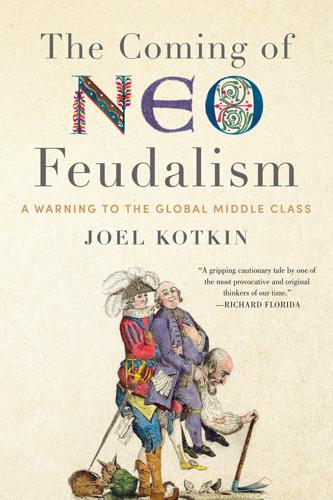
The Coming of Neo-Feudalism: A Warning to the Global Middle Class
by
Joel Kotkin
Published 11 May 2020
The corporate image of companies like Uber and Lyft features moonlighting drivers saving up cash for a family vacation or a fancy date while providing a convenient service for customers—the ultimate win-win.16 Yet for most gig workers there’s not very much that is democratic or satisfying in it. Most are not like the middle-class driver in Uber ads, picking up some extra cash for luxuries. Instead, they depend on their “gigs” for a livelihood, often barely making ends meet. Almost two-thirds of American gig workers in their late thirties and forties—the age range most associated with family formation—were struggling to pay their bills. Nearly half of gig workers in California live under the poverty line. One survey of gig workers in seventy-five countries including the United States found that most earned less than minimum wage, leading one observer to label them “the last of Marx’s oppressed proletarians.”17 The reasons for their precarious situation are not hard to locate.
…
Below them lies the vast population of gig workers, whom García Martínez compares to sharecroppers in the South. At the bottom, there is an untouchable class of homeless, drug addicts, and criminals.36 García Martínez depicts a society that is “highly stratified, with little social mobility.” High prices make it all but impossible for most to own homes. Workers in the gig economy have little chance to improve their lot, as they struggle to pay their rent, or are forced to sleep in their cars or on friends’ couches, or commute great distances in to work.37 Roughly half of California’s gig workers struggle with poverty.38 For the “untouchables” below them, the prospects are even grimmer.
…
Everyone else will come to subsist on some combination of part-time entrepreneurial ‘gig work’ and government aid.”11 Ferenstein says that many tech titans, in contrast to business leaders of the past, favor a radically expanded welfare state.12 Mark Zuckerberg, Elon Musk, Travis Kalanick (former head of Uber), and Sam Altman (founder of Y Combinator) all favor a guaranteed annual income, in part to allay fears of insurrection by a vulnerable and struggling workforce. Yet unlike the “Penthouse Bolsheviks” of the 1930s, they have no intention of allowing their own fortunes to be squeezed. Instead, the middle class would likely foot much of the bill for guaranteed wages, health care, free college, and housing assistance, along with subsidies for gig workers, who do not receive benefits from their employers.13 This model could best be described as oligarchical socialism. The redistribution of resources would meet the material needs of the working class and the declining middle class, but it would not promote upward mobility or threaten the dominance of the oligarchs.

After the Gig: How the Sharing Economy Got Hijacked and How to Win It Back
by
Juliet Schor
,
William Attwood-Charles
and
Mehmet Cansoy
Published 15 Mar 2020
(Mercifully, they did rename them “taskers.”) Bev downgraded her rating of the platform from an eight to a three. “I don’t feel that they value individual rabbits the way they used to.” Earners on lower-wage platforms also began registering their distress, as companies cut wages and overhired. The experience of Abigail, a gig worker juggling multiple jobs, suggested the chance to remake work might be slipping away. Abigail was a twenty-eight-year-old white woman, originally from New Hampshire. She’s a free spirit, who’d spent much of her twenties backpacking, hiking, even living in a van. She returned to Boston because her family needed her.
…
To answer these questions, we need to take a closer look at the sector, starting with the experiences of people who were working on the platforms. 2 Earning on the Platforms When they launched, the platforms offered a dramatically different way to work. They gave freedoms that few employers do, such as the ability to work when and as much as wanted. They did away with direct supervision. Some platforms let workers set their own wage rates. These are features of jobs that most of our earners and the majority of gig workers desire.1 For Juan Romero all these factors came into play. Juan is an enterprising young man who emigrated from Latin America to Florida when he was sixteen. He soon graduated from college, earned an MA in accounting, and settled into full-time employment. Then the 2008 financial crash devastated the Florida economy.
…
For most of the companies their business model is premised on avoiding the costs of employment and shifting risk onto the provider. A 2018 California case involving the company Dynamex led to an updated, more restrictive set of criteria for independent contractors that created momentum for reclassification.19 In September 2019 the California Legislature passed #AB5, which explicitly made many gig workers employees. Uber promptly announced it would fail to comply with the legislation.20 It’s an ongoing drama. Platform earners are not only independent in a legal sense; they also typically do their work independently of other workers.21 Their main interactions are with customers, in cars or homes.

Chokepoint Capitalism
by
Rebecca Giblin
and
Cory Doctorow
Published 26 Sep 2022
Eamonn Forde, “Taylor Swift: Does Apple’s Climbdown Really Demonstrate Her Power?” Guardian, June 22, 2015, https://www.theguardian.com/music/musicblog/2015/jun/22/taylor-swift-does-apples-climbdown-really-demonstrate-her-power. 3. Julia Angwin, “The Antitrust Case for Gig Worker Rights,” The Markup, Nov. 7, 2020, https://www.getrevue.co/profile/themarkup/issues/the-antitrust-case-for-gig-worker-rights-289982. 4. Applicants 1–4 v. Uber BV, C/13/692003/HA RK 20–302 (Court of Amsterdam), Mar. 11, 2021, https://uitspraken.rechtspraak.nl/inziendocument?id=ECLI:NL:RBAMS:2021:1018; Applicants 1–10 v. Uber BV, C/13/687315/ HA RK 20–207 (Court of Amsterdam), Mar. 11, 2021, https://uitspraken.rechtspraak.nl/inziendocument?
…
Wendy Lee, “WGA Aims to Crack Down on Writers Secretly Working with ‘Fired’ Agents,” Los Angeles Times, Feb. 16, 2020, https://www.latimes.com/entertainment-arts/business/story/2020-02-14/wga-aims-to-crack-down-on-writers-working-with-non-approved-agents. 13. Sanjukta Paul, “Antitrust as Allocator of Coordination Rights,” UCLA Law Review 67, no. 2 (2020), https://papers.ssrn.com/sol3/papers.cfm?abstract_id=3337861. 14. Sandeep Vaheesan, “Gig Workers Need Antitrust Reform,” Dissent, Dec. 18, 2020, https://www.dissentmagazine.org/online_articles/gig-workers-need-antitrust-reform. CHAPTER 15: TIME LIMITS ON COPYRIGHT CONTRACTS 1. Paul Slade, “Superheroes in Court: Continued,” http://www.planetslade.com/superheroes8.html. 2. Richard Harrington, “MCA to Pay Royalties to RB Greats,” Washington Post, Dec. 7, 1989, https://www.washingtonpost.com/archive/lifestyle/1989/12/07/mca-to-pay-royalties-to-rb-greats/63714098-29be-481e-915f-cb43f6bdf07c. 3.
…
Naturally, they find most of them in labor costs—“that most bendy and squishable portion of an enterprise’s expenditure.”45 Creative workers have worked cheaply for decades because they have no other choice. The path we’re on, in the direction of ever-increasing corporate concentration, will similarly eradicate choice for more and more workers. The chokepoint economy is already squeezing farmers and gig workers and college students. Unless we take urgent action, more and more of us will join them. Creative workers know the culture industries are in trouble. They’re told, variously, that the solution is more copyright protection, or internet filters to prevent infringement, or stronger locks on digital content.

Make Your Own Job: How the Entrepreneurial Work Ethic Exhausted America
by
Erik Baker
Published 13 Jan 2025
Regulatory institutions in the United States, especially in the 2010s, tended to sympathize with the industry’s claims that its workers were not really “employees” for the purposes of labor law. Efforts to organize unions of gig workers have long faced stiff headwinds, including the reality that many gig workers value the “independence” and “flexibility” associated with gig-style working arrangements. According to one 2021 poll, gig workers themselves are slightly more likely than members of the general public to say that it is valid to classify gig workers as independent contractors rather than employees. And it is the workers who describe themselves as most financially dependent on the platforms who are most likely to cite the desire to “be their own boss” as an important motivation for seeking out gig employment.17 The greatest ideological accomplishment of the gig economy has been to conjure up perhaps the most convincing vision to date of an economy that is powered at its frontier by entrepreneurship but simultaneously succeeds in expanding opportunities for entrepreneurship for those at the bottom of the class structure.
…
It glorified the industrial vanguard—those wealthy business leaders bringing new products and services to market—but also masqueraded as a survival strategy for the most disenfranchised members of the working class. Our image of “the entrepreneur” is still dominated by two antipodal figures: the tech billionaire and the gig worker using that billionaire’s app to scrape out an income. It is for this reason that the story of the entrepreneurial work ethic and its long career can help us make better sense of the broken culture of work in the contemporary United States. Here, too, there is contradiction. On the one hand there is burnout, a hustle culture whose intensity many Americans feel is grinding them into mental, emotional, and physical depletion.
…
Jolene’s friends mouth platitudes about social problems from climate change to refugee mistreatment, and they congratulate themselves for their commitment to doing something—to making “change.” Jolene expects Damani to be impressed. She and her friends see Damani as one of them. “To independent entrepreneurs! Look at us all,” one of them exclaims. From gig workers to self-employed social workers to bottled-water magnates: in Jolene’s circles the capaciousness of the entrepreneur category is taken for granted.13 But Damani doesn’t buy it. She has a circle of her own. They congregate at an abandoned warehouse they’ve repurposed into a community center of sorts, which they christen “Doo Wop.”

Enshittification: Why Everything Suddenly Got Worse and What to Do About It
by
Cory Doctorow
Published 6 Oct 2025
I had a conversation with the company founders in 2022 during which they told me that a DoorDash insider told them that there were forty engineers assigned to blocking Para from uncovering Dashers’ full compensation. Today, Para has expanded its offerings, with an “autodecline” feature that lets gig workers automatically decline any job offer that is below a certain level. This is part of a “multiapp” strategy that aims to let gig workers set up accounts with multiple services—Uber and Lyft, DoorDash and Grubhub, and so on—and get a dashboard showing them which service is offering the highest payout from moment to moment, playing the gig companies off against one another. Gig workers are ground zero for this kind of counter-twiddling, because they’re the first class of workers whose boss is an app.
…
But in the absence of enshittification, in a world where workers can seize the means of computation, digital technology is a powerful tool for clawing back power from the bosses directly, even when the regulators and lawmakers who are supposed to have the workers’ back fall down on the job. That’s because twiddling is a double-edged sword. While twiddling can erode gig workers’ pay (through algorithmic wage discrimination and other, even blunter scams, as we’ll see in a moment), counter-twiddling can push pay back up again, pitting algorithm against algorithm. To understand why this is viable, we first need to spend a moment on security theory. It’s useful to conceptualize security matters as a contest between defenders (anyone who wants to keep the status quo) and attackers (those who want to change it).
…
In July 2023, when members of the UNITE HERE Local 11 who worked at Orange County’s Laguna Cliffs Marriott Resort & Spa, owned by the University of California and managed by Aimbridge Hospitality, tried to bargain for a contract with their employer, the boss refused to deal, triggering a strike. So Marriott/Aimbridge turned to Instawork to drum up an army of robo-scabs, dispatching gig workers to cross the picket line in a bid to break the strike. Any worker who refused to cross the picket line was permanently blacklisted from Instawork, which is the primary source of temp work throughout Southern California. Firing an employee for refusing to cross a picket line is extremely illegal, but by muddying the waters about whether workers were contractors or employees, Instawork was able to offer this scab-as-a-service deal to the region’s major employers, who were only too happy to take advantage of it.

Ghost Road: Beyond the Driverless Car
by
Anthony M. Townsend
Published 15 Jun 2020
Even something as superficial as lane markings, which AV cameras must be able to see clearly, will simply vanish without governments keeping them freshly painted. Autonomists also fail to credit the crowd, that vast pool of workers mobilized to label the imagery that deep-learning systems require as input. This sea of human teachers—including, for instance, the team Google kept in India to train its first AVs and the 300,000 online gig workers of Seattle-based Mighty AI—performs endless hours of mind-numbing human intelligence tasks (HITs in AI jargon), the most underappreciated role in the creation story of this technology. Some of this work is done once, early in the development of AV software, to provide a baseline for algorithmic training.
…
But the huge number of vehicles and the speed with which Bird deployed them meant finding a new approach to staffing up teams to rebalance the wayward flock. What’s more, scooter companies faced a severe backlash from communities, which objected to the haphazard deposits of these diminutive personal vehicles on curbs, on street corners, and everywhere in between. Bird’s answer to rebalancing was as comical as it was practical—hire a gig-worker army of “bird hunters” to round up, recharge, and redeploy scooters for a bounty of five dollars per vehicle. The scheme seemed too crazy to work—until it did. And with its decentralized approach to rebalancing, Bird’s scooter network expanded even more rapidly than dockless bike-share systems had the previous summer.
…
Same-day delivery in big cities has historically relied on an itinerant work-force of independent contractors. This setup allows vendors to easily scale the pool of workers with demand. Today, a new courier workforce is on the move, as professional delivery drivers are replaced by phone-guided gig workers dispatched by apps like Uber Eats and Deliveroo. These gadgets allow companies to hire less-skilled workers, but in the switch, valuable local knowledge and curbside experience have been lost. For instance, one UK study identified a veteran local driver who logged 44 percent fewer miles in 35 percent less time than a novice making the same set of deliveries.
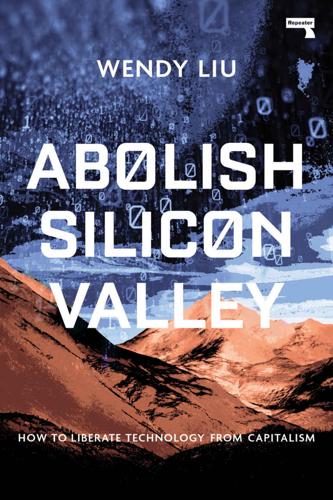
Abolish Silicon Valley: How to Liberate Technology From Capitalism
by
Wendy Liu
Published 22 Mar 2020
In the past, I had believed that it was enough for me to work on an interesting technical problem. It didn’t really matter what the technology actually did, as long as I was learning something and getting paid. I could have been tracking down dissidents for repressive governments, or algorithmically stealing tips from underpaid gig workers,2 or trading people’s personal data for the purpose of ad targeting — it was all the same to me. As long as someone was offering me a lot of money to work on a challenging problem, then on some level it must have been OK. I’d implicitly assumed that those with money could be trusted to spend it on the right causes.
…
Most of my tech friends didn’t have student debt anymore, if they ever did; after a couple of years in the industry, they would amass enough stock grants to pay it off. Even a high-end debt of several hundred thousand dollars would be manageable if your company were to IPO or get acquired by Google. But if you were a schoolteacher or nurse or gig worker, there wouldn’t be any looming IPO for you to look forward to; Google was not about to acquihire you and pay off your debts. This seemed like an altogether worse system than not having debt at all, in a world where education was treated as a social good rather than an individualised investment in one’s earning potential.
…
He sounds genuinely jazzed about his employer. Our driver looks intrigued and asks for details. I think about the monstrosity of a society where it’s accepted that most companies do the bare minimum for their workers, and it’s considered a delightful surprise when they do even slightly more. I think about the gig workers who have been killed on the job, whose families are apparently owed nothing by the company that profits from their work. And I think about the shareholders of these companies — founders, investors, early employees — who are going to cash out massively when their company gets acquired or goes public.

Mood Machine: The Rise of Spotify and the Costs of the Perfect Playlist
by
Liz Pelly
Published 7 Jan 2025
In this sense, the idea of Spotify as a creator platform is murky: the company’s own “creator” tools don’t involve fans paying artists, but rather, artists paying the company.4 Still, the mythologies of the creator economy—build your brand, grow your audience, be your own boss, hustle—run deep in Spotify’s messaging to artists. They are mythologies that intertwine and overlap with what was once called “the gig economy,” referring to Uber, Grubhub, and other precarious app-based work. Selling artists on the gig economy is a particularly perverse dynamic: in some ways, musicians were the original gig workers, and in today’s economy, the image of the free-agent musician who loves what they do, and trades job security for passion projects, is often deployed to soften the image of so-called gig work and its egregious labor model. “It’s especially incumbent upon artists that we deeply analyze and be very critical of the current paradigm,” the writer and filmmaker Astra Taylor once told me in an interview, “because the creative ethos is being used to bolster this very exploitative new form of capitalism.”
…
“It’s especially incumbent upon artists that we deeply analyze and be very critical of the current paradigm,” the writer and filmmaker Astra Taylor once told me in an interview, “because the creative ethos is being used to bolster this very exploitative new form of capitalism.” It is both bizarre and concerning that the music industry, in turn, sells this model and faux-independence back to artists today through “creator tools” and “artist services.” When Spotify calls itself a “two-sided marketplace,” it lays bare the similarities between today’s musicians and gig workers more broadly: precarious work where your boss is an app.5 * * * In 2017, just a year before the IPO, Spotify was at a crossroads. And it wasn’t just manifesting in PFC. In an interview, a former employee, who was also working on the Creator team, explained it to me this way: “They were trying to decide whether or not they were going to invest in long tail creators and independent artists, thereby changing the way that value is exchanged in the music industry, or if they were going to invest in the system as it currently was, and uphold the industrial music system that has been evolving for one hundred years.
…
Before even choosing a name, its first campaign focused on the expansion of pandemic unemployment benefits under the Coronavirus Aid, Relief, and Economic Security Act, mobilizing hundreds of musicians to circulate letters to Congress. “That was how we started—thinking, How are music workers and gig workers going to be protected during this time?” Josephine Shetty, one of the original UMAW musician-organizers, told me at the time. The letter advocated for immigrant access to relief programs, national rent and mortgage cancelation, Medicare for All, and funding for the Postal Service and the National Endowment for the Arts.3 UMAW wasn’t the only group of newly activated musicians organizing during the pandemic.

A Hacker's Mind: How the Powerful Bend Society's Rules, and How to Bend Them Back
by
Bruce Schneier
Published 7 Feb 2023
And two, the long-term profitability of these companies assumes either the continued avoidance of regulation (and, by extension, the exploitation of the poorly paid gig workers they employ) or the wholesale replacement of their gig workers by machines. The response by these companies to state and local governments’ attempts to patch the vulnerabilities upon which they rely demonstrates how far they will go. Following a 2018 California State Supreme Court ruling and the 2019 state law mentioned above, several gig economy companies banded together to push a referendum (Proposition 22) that would remove many employee protections from their gig workers: employee classification, wage floors, unemployment insurance, healthcare insurance, and so on.
…
In 2020, a pandemic year when most of us stayed home, DoorDash lost $139 million and Grubhub lost $156 million. It’s hard to find numbers for Uber Eats, but Uber itself lost $6.8 billion—and that’s better than its $8.5 billion loss in 2019. And it’s unsustainable for individual investors, too; food delivery doesn’t work for anybody. The drivers—gig workers with no benefits or job security—are poorly paid. The services hurt restaurants: they’re not profitable for a whole bunch of reasons, they don’t bring in incremental sales, and a restaurant’s reputation suffers when the delivery service screws up. Even the customers don’t fare well: they’re hit with service fees and higher prices and suffer all sorts of delivery problems.
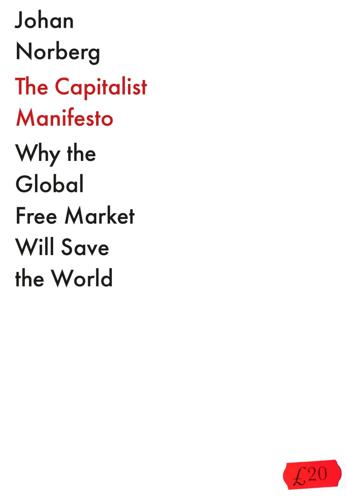
The Capitalist Manifesto
by
Johan Norberg
Published 14 Jun 2023
I must admit that when I see a food courier cycling fast in rain and headwind to deliver pizza for a few bucks, I also doubt if this is really a step forward for humanity. Even though this is a new sector and research is in its infancy, an interesting survey result is that, on average, gig workers seem to be roughly as satisfied with wages and working hours as permanent employees, even though the spread is large.31 It has to do with the fact that the absolute majority of gig workers state that they actively sought such jobs, not just because they have no alternatives. For most people, it is a temporary job on the way to or in addition to something else. It is often a matter of complementing another job or earning an income while studying, starting a business or looking for a job that really matches one’s skills.
…
Studies of Uber and Lyft drivers in the United States consistently show that between 60 and 70 per cent prefer to have the job as a gig over a permanent job. And this is also the wrong question, since the real choice is between being a gig worker and having a smaller chance of permanent employment, because if companies have to pay fixed salaries and benefits, they will not be able to accept anyone, especially not someone who does not pull in a sufficient number of assignments or is not efficient. When Canada banned Foodora from treating food couriers as independent contractors in 2020, the company left the market. Many dislike the fact that gig workers are only considered to work when they perform a certain task and many platforms have been pressured by trade unions or the law to treat the workers as employees.
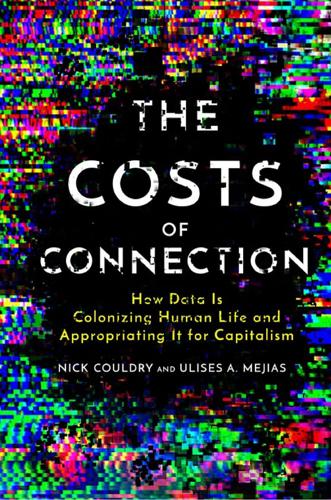
The Costs of Connection: How Data Is Colonizing Human Life and Appropriating It for Capitalism
by
Nick Couldry
and
Ulises A. Mejias
Published 19 Aug 2019
This is monopsony in action. The demographics of the people who employ gig workers (in the United States, at least) seem to skew strongly toward young, white, wealthy urban dwellers.84 The demographics of the workers themselves (again, in the United States) skew toward those who are young, lower income (less than $30,000 per year), and black or Latino. Of the 8 percent of Americans making money from gig platforms, three-fifths felt that their platform income was “essential” or “important” to them.85 Anecdotal evidence seems to corroborate the fact that some gig workers do have opportunities to engage in new creative and leisure activities as a result of their unstructured lifestyles.
…
What scares me the most is that I have no guarantees, no steady pay, no stability. . . . I currently work seven days a week to make €750 (£525) per month and I would earn a lot more doing a more traditional job with a traditional employment contract, but these arrangements are a rarity these days.87 Since retirement plans seem to be out of the question, the advice given to gig workers is that they should simply plan to not retire!88 What we see is essentially a technologized form of a subsistence economy that seems to be creating a new kind of “reserve army of labor.” Marx had described the importance in capitalism of maintaining part of the population in unemployment (the “reserve army”) so that they could be easily hired in times when overproduction was necessary.89 The promise of intermittent work on platforms positions large numbers of people as a reserve army for work outside institutions.
…
Marx had described the importance in capitalism of maintaining part of the population in unemployment (the “reserve army”) so that they could be easily hired in times when overproduction was necessary.89 The promise of intermittent work on platforms positions large numbers of people as a reserve army for work outside institutions. Thus, the combined effects of the gig economy and automation will likely be disastrous for most workers—not only will many of them face replacement by machines but those who remain will more likely accept lower wages and worse working conditions as the specter of a reserve army of gig workers, robots, and AI hangs over their heads. Given all of this, considerable PR maneuvering is required to make such a depressing trend palatable. Here, what in chapter 1 we called the ideology of personalization can do useful work. In its own marketing materials, Airbnb promotes itself as “an economic lifeline for the middle class.”90 An ad for Uber features an African American driver speaking of the economic necessity to have a “side hustle,” a necessity Uber allows him to fulfill while also giving him time to “chill” whenever he wants and to spend more time with his family.91 The reality of Uber in particular, however, paints a less rosy picture.

Survival of the Richest: Escape Fantasies of the Tech Billionaires
by
Douglas Rushkoff
Published 7 Sep 2022
Our bodies don’t know to blame this on the media environment. Instead, we blame it on the other person. They are not to be trusted. This sense of distrust and alienation then feeds back into the way we write our business plans and build our technologies. Those are not people. They’re just users or gig workers on the other side of the screen. That makes them easier to surveil, exploit, dominate, ignore, and leave behind. The Mindset’s logic becomes self-reinforcing. Unlike the billionaires, many of us didn’t like the moral compromises we made during the pandemic, but felt little freedom to choose otherwise.
…
That first view of the earth from space in 1968 captured in a photograph helped launch the environmental movement. The image of the “blue marble” changed our civilization’s perspective on our interrelatedness and our mutual dependence on the fragile systems of nature. Even then, it was hard to justify. This one, well, we participated in as the Covid-captive customers and gig workers of a monopoly retailer with one of the highest employee turnover rates in the industry. It was hardly a collective, public endeavor. Don’t listen to Bezos’s claim that this mission was the first step toward moving all of earth’s heavy industry into space (as if this could somehow prove more efficient and less extractive or polluting).
…
We can actually do less, consume less, and travel less—and make ourselves happier and less stressed in the process. Buy local, engage in mutual aid, and support cooperatives. Use monopoly law to break up anticompetitive behemoths, environmental regulation to limit waste, and organized labor to promote the rights of gig workers. Reverse tax policy so that those receiving passive capital gains on their wealth pay higher rates than those actively working for their income. Such measures will slow or even reverse the growth rates of our largest companies, and challenge the financialized economy as it currently operates. That may go against our instinct to keep the GDP climbing, and our well-ingrained concern for the health of the economy.

Gigged: The End of the Job and the Future of Work
by
Sarah Kessler
Published 11 Jun 2018
He found that workers who won gigs online actually earned more than their offline peers when the job required a physical presence, such as electrical work or carpentry. His hypothesis was that because the gig economy website made it less of a hassle to find workers to complete these jobs, more people sought services, which pushed wages up. For digital-only tasks like graphic design or writing, however, wages of Bay Area gig workers were lower than those of their peers who found gigs offline. Though they lived in one of the most expensive areas in the United States, online, they were competing with workers everywhere.25 Kristy found the same problem when she experimented with Upwork. “I found a race to the bottom,” she said.
…
At the heart of it was a new status quo throughout the United States and much of the world: Risk had migrated from companies to workers. This was true of those who had watched their employment opportunities, over decades, become increasingly fractured into a web of contractors, freelancers, temps, and other non-traditional employment. It was also true of employees with full-time jobs, who, unlike gig workers, were covered under all labor protection laws but had still seen the holes in their safety nets widen. Evidence of what the political scientist Jacob Hacker had called “The Great Risk Shift” in his 2006 book of the same title was everywhere. • Pension plans had all but died. Between 1983 and 2013, the percentage of Americans covered by the benefit had slid from 62% to 17%.3 Instead, employers were offering 401(k) plans for retirement savings,4 because a typical 3% match to an employee’s contribution is less expensive than the 7% to 8% of payroll it takes to fund a pension program.5 If the market doesn’t perform in this arrangement, it’s the worker, not the employer, who takes the hit.
…
“The much-touted virtues of flexibility, independence and creativity offered by gig work might be true for some workers under some conditions,” she said in a speech at an annual conference for the New America Foundation in Washington, “but for many, the gig economy is simply the next step in a losing effort to build some economic security in a world where all the benefits are floating to the top 10 percent.”21 The speech wasn’t exactly about the gig economy: “The problems facing gig workers are much like the problems facing millions of other workers,” Warren noted. But the headlines were definitely about the gig economy: “Elizabeth Warren Takes on Uber, Lyft and the ‘Gig Economy’”;22 “Elizabeth Warren Calls for Increased Regulations on Uber, Lyft, and the ‘Gig Economy’”;23 “Elizabeth Warren Slams Uber and Lyft.”24 In her speech, Warren had acknowledged that talking about TaskRabbit, Uber, and Lyft was “very hip.”

Internet for the People: The Fight for Our Digital Future
by
Ben Tarnoff
Published 13 Jun 2022
A 2019 study by researchers at Georgetown University found that half of Uber drivers surveyed in Washington, DC, lived at or below the federal poverty line. Inspired by Uber’s example, a succession of startups have tried to “Uberize” other services. Their efforts have gathered fresh strength from the passage of Proposition 22 in California, a 2020 ballot measure that cemented the legal status of gig workers as independent contractors. This outcome was more or less purchased with a $200 million campaign conducted by gig companies, though at the time of writing the law’s future is in doubt: in August 2021, a California judge ruled that the measure violated the state’s constitution, prompting the gig companies to file an appeal.
…
Online colleges are disproportionately attended by Black women, who take on large student loans they often struggle to pay off. The inclusion of a historically excluded group is achieved, but on predatory terms. This is a common pattern within online malls. Black and brown Americans who come from communities with persistently high rates of unemployment can make money as gig workers. Women kept at home by caregiving responsibilities can make money doing digital piecework while the baby sleeps. Slum dwellers in poor countries can make money labeling datasets. And so on: people whose lives and labor have been devalued through the historical and ongoing exclusions of racism, sexism, and imperialism can find a toehold in the elastic workplaces of the internet.
…
Prop 22 campaign and pursuit of similar measures: Josh Eidelson, “The Gig Economy Is Coming for Millions of American Jobs,” Bloomberg Businessweek, February 17, 2021, and Kate Conger, “Gig Companies Want Massachusetts Voters to Exempt Workers from Employee Status,” New York Times, August 4, 2021. Judge’s ruling against Prop 22: Kate Conger and Kellen Browning, “A Judge Declared California’s Gig Worker Law Unconstitutional. Now What?,” New York Times, August 23, 2021. Carolan op-ed: Shawn Carolan, “What Proposition 22 Now Makes Possible,” The Information, November 10, 2020. Albertsons: Eidelson, “The Gig Economy Is Coming.” “It is too late …”: Schifter’s suicide note, available at imgur.com/gallery/M24BM. 131, For every worker … According to the staffing agency directory OnContracting, contingent labor accounts for 40 to 50 percent of the workforce at most tech firms; see Daisuke Wakabayashi, “Google’s Shadow Work Force: Temps Who Outnumber Full-Time Employees,” New York Times, May 18, 2019.
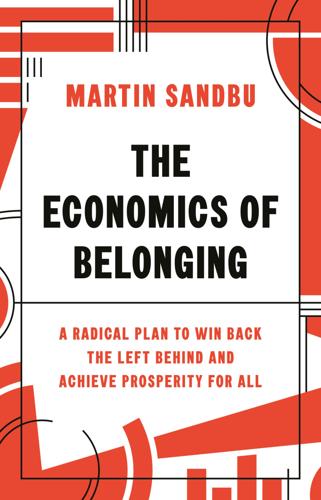
The Economics of Belonging: A Radical Plan to Win Back the Left Behind and Achieve Prosperity for All
by
Martin Sandbu
Published 15 Jun 2020
The more portable people’s rights are, the easier it is to move to a better job, which brings greater prosperity not just to the worker himself or herself but also to the economy at large. How can this be achieved? Three broad strategies are conceivable, all with the potential to make a big difference. First, unions designed specifically for gig workers could and indeed have been set up. An example is the Independent Workers’ Union of Great Britain, which has pushed court cases in the United Kingdom to get gig workers classified in categories that give them stronger workplace rights.22 Governments can legislate to help such unions organise and engage in collective bargaining. Second, the platforms that allow gig work to be distributed can themselves be legally required to let their individual workers organise and engage in contractual bargaining with them.
…
See also universal basic income (UBI)/negative income tax (NIT) tax rates, 115, 170 tax treaties, 182, 227, 264n23 Tea Party movement, 40 technology: digital, 30, 113, 128–30; economics of belonging aided by, 97; globalisation aided by, 72; government’s failed response to, 51; inequalities exaggerated by, 30; job creation by, 28–29; job loss caused by, 17–18, 23, 28–29, 35, 50, 56–62, 68–70, 77, 79; in knowledge economy, 28; labour productivity increased by, 97; low-paid labour vs., 97–98; in manufacturing, 79; market abuse facilitated by, 30, 113, 128–30; Norwegian economy’s use of, 96–97, 101; wage structures as means of encouraging investment in, 98–104; wealth concentration aided by, 169 Thatcher, Margaret, 57, 230 third-way political/economic approach, 117, 231, 232 Tilbury, England, 17, 18, 22, 32 Tooze, Adam, 87 trade: classical and non-classical types of, 73–75; employment created by, 78, 249n9, 250n16; globalisation and, 72–82; unemployment linked to, 77–78, 249n9, 249n13 Treaty of Detroit, 52, 55 Trump, Donald: ideological supporters of, 15; illiberalism of, 7; and immigration, 82; and manufacturing, 75; masculinity as value of, 33–34; political shock of, 7, 18; tax policy of, 179, 264n18; voter support for, 16, 33, 41, 45, 46, 72, 192–93 trust, 47–48 Uber, 69, 113, 124, 128, 180–81 unemployment: cultural and psychological consequences of, 9, 26, 35; employment opportunities lessened by periods of, 138; GDP in relation to, 136; from global financial crisis, 63; globalisation as cause of, 70, 73, 75–78; immigration’s role in, 82–83, 215–16; manufacturing-related, 22–27, 22, 77; of marginalised groups, 135, 136; recessions’ effects on, 135; technology as cause of, 17–18, 23, 28–29, 35, 50, 56–62, 68–70, 77, 79; trade as cause of, 77–78, 249n9, 249n13; usurpation story about, 18, 21–22, 26, 82, 90 unions: alternatives to traditional, 122–25; decline of, 57–58, 60, 69, 121; future of, 234; for gig workers, 125; in the Nordic countries, 100–103, 110, 121, 123; as obstacles to change, 122; social contract role of, 52, 54, 61; wage structures linked to influence of, 52, 54, 57–58, 60, 121; and workplace empowerment, 121–25. See also collective bargaining United Auto Workers, 52 United Kingdom: employment and technology in, 102–3; health declines in, 36, 193–94; immigration in, 270n5; regional economic decline in, 192; response to global financial crisis in, 133–34, 144–45; union busting in, 57.

The Contrarian: Peter Thiel and Silicon Valley's Pursuit of Power
by
Max Chafkin
Published 14 Sep 2021
There was Lyft, a ride-hailing app that replaced taxi drivers with regular people driving their own cars. (Lyft developed this idea; Uber would copy it and make it famous.) The Founders Fund portfolio also included Airbnb, a lodging service to let people rent out spare bedrooms or vacation homes; TaskRabbit, where “gig workers” offered to do odd jobs, like laundry and dogwalking; and Postmates, a similar service, except the gig workers delivered you gourmet food instead of putting together your IKEA furniture. Though the apps had a few detractors, the press focused almost exclusively on their promise. “This is powerful,” wrote The New York Times’s eternally optimistic tribune of globalization, Thomas Friedman, predicting that the sharing economy would allow unskilled workers to adapt to the modern economy.
…
Uber and Lyft drivers, TaskRabbit and Postmates workers, and the part-time hoteliers of Airbnb were not employees and couldn’t be by definition. That meant the app companies they worked for—Thiel’s portfolio companies—were under no obligation to provide for their health insurance or retirement or to negotiate with unions that represented them. There was no minimum wage for gig workers since they got paid by the gig. Moreover, this newly popular labor model wasn’t limited to the sharing economy; businesses everywhere were stripping workers of rights by switching from full-time to gig-based contract workers. Now Airbnb, Lyft, and the rest of Thiel’s portfolio provided an ideology to back up the shift.
…
J., 196, 227 Davidson, James Dale, 175 The Sovereign Individual, 175, 208–9 DCGS, 147, 216–17, 234–35, 284 DealBook conference, 326 DeAnna, Kevin, 203 DeepMind, xiii deep state, 192–93 Defense Advanced Research Projects Agency (DARPA), 145, 333 Defense Department, 114, 145–46, 149, 288, 310 Defense Intelligence Agency (DIA), 149 de Grey, Aubrey, 138, 139, 326, 327 DeMartino, Anthony, 283 democracy, 14, 32, 112, 140, 141, 176, 182, 192, 250, 303, 318, 321, 322 Democrats, Democratic Party, 47, 94, 179, 197, 220, 281, 301, 306, 313, 333 “Atari,” 94 Facebook and, 299, 300, 302–3 Deng, Wendi, x Denny, Simon, 305–6 Denton, Nick, 123–29, 194–96, 200, 201, 227–33 Deploraball, 255 Dershowitz, Alan, 198 Details, 173, 175 Dhillon, Harmeet, 279 Dickinson, Pax, 202 Dietrick, Heather, 201 Digg, 118 Dimon, Jamie, 118 disruption, 77, 313 Diversity Myth, The (Thiel and Sacks), 40–42, 47, 53, 145, 202, 252, 344n DNA sequencing, 168 Doherty, Bran, 181 Donnelly, Sally, 283 Doohan, James, 59 dot-com era, 48, 68, 73, 80, 84, 85, 88, 95, 98, 118, 292 Dowd, Maureen, 266 Downs, Jim, 243 Drange, Matt, 230 drones, 152, 288 Dropbox, 298 Drudge Report, viii drug legalization, 178–79, 259 D’Souza, Aron, 166, 193–95, 198, 201 D’Souza, Dinesh, 31, 35, 42, 61, 99 Duke, David, 31 Dungeons & Dragons (D&D), 1–2, 8, 306 Earnhardt, Dale, Jr., 299 Eastwood, Clint, 182 eBay Billpoint and, 56, 65, 90 PayPal and, 56, 59, 64–66, 70, 80–81, 84–85, 147, 274 PayPal acquired by, xii, 76, 88–91, 105, 108 Eden, William, 331 Edmondson, James Larry, 38 education, higher, xvi, 158, 160–62, 191–92, 335 Edwards, John, 177 Eisenberg, Jesse, 159 Eisman, Steve, 132 Electric Kool-Aid Acid Test, The (Wolfe), 162 Elevation Partners, 76 Ellis, Bret Easton, 25 Ellis, Curt, 251 Ellison, Larry, 68, 188, 221 Emergent Ventures, 192 Endorse Liberty, 179–81 EPA (Environmental Protection Agency), 250, 251 Epstein, Marcus, 203 ESPN, 99 Esquire, 144 extropianism, 23 Facebook, viii, ix, xiii, 77, 105–9, 112, 119, 134, 135, 141, 159, 162–64, 180, 182, 213, 234, 245, 259, 264, 268, 271, 276–77, 279, 280, 282, 285, 291–304, 317 Cambridge Analytica scandal and, 219–20 China and, 298–99 conservative opinions and, viii–xi, 245–46, 298, 300, 303–4 COVID pandemic and, 309, 313 Democrats and, 299, 300, 302–3 IPO of, 292, 294 Luckey at, 296 and 2008 US presidential election, 135 and 2016 US presidential election, 299, 323 Russia and, 245, 299 Trump and, 220, 245–46, 299–300, 302–4, 323 users’ sharing of information on, 297 Fairchild Semiconductor, 143–44 Falwell, Jerry, Jr., 237 Fast Company, 135 Fathom Radiant, 168 FBI, 79, 80, 114, 149, 289 FCC, 249 FDA (Food and Drug Administration), xvii, 181–82, 249, 253–54, 308, 316, 327 Federalist Society, 33, 170, 250 Federal Reserve, 133, 178, 183 Federation for American Immigration Reform (FAIR), 139, 266 feminism, 36, 202 Ferguson, Niall, 280–81 Fidelity, 211 Fieldlink, 50–51 1517 Fund, 169 financial crisis of 2008, 131–33, 145, 311, 313 Great Recession following, 104, 132, 157, 178 Financial Times, 124 Fincher, David, 159 Finish, The (Bowden), 152–53 Fiorina, Carly, 221, 223–25 Fischer, Bobby, 7, 22 Flatiron Health, 253 Flickr, 118 Flooz, 56, 68, 72 Flynn, Michael, 148–49, 235, 283–84 Forbes, 154, 215, 230 Ford, Henry, 270 formalism, 176 Fortune, 121, 192, 223, 231 Foster, Jodie, 128 Foster City, Calif., 1–2, 6–7, 10 Founders Fund, 119–21, 126, 138, 160, 162–64, 167, 168, 170, 173, 180, 189, 211, 214, 234, 248, 249, 269, 282, 285, 293, 297, 309, 310, 319, 330 Founder’s Paradox, The (Denny), 305–6 Fountainhead, The (Rand), 176 Fox News, x, 179, 247–48, 286, 289, 332 Free Forever PAC, 315 Frieden, Tom, 311 Friedman, Milton, 137 Friedman, Patri, 136–37, 169, 174, 176 Friedman, Thomas, 189 Friendster, 105 Frisson, 97–99, 108, 210 From Poop to Gold (Jones), 180 FTC, 249, 281 FWD.us, 263 Gaetz, Matt, 302 gambling, 81–83 Gamergate, 204 GameStop, 330 Garner, Eric, 187 Gates, Bill, 68 Gausebeck, David, 78 Gawker Media, xiv–xvi, xviii, 122, 123–24, 126–30, 133, 134, 137, 153, 184, 189, 193–98, 200–202, 228–33, 239, 277, 279, 287, 326, 334 Hogan’s suit against, xv, 195–97, 201, 227–34 Valleywag, 121, 123, 124, 126–29, 134, 140–42, 189 gay community, 34, 40–42, 125, 177 AIDS and, 32, 34, 40 conservatives in, 177 gay marriage, 177, 179, 199, 240 gay rights, 40–41, 177, 184, 186, 259, 314 homophobia and, 32–35, 40, 126, 128 outing and, 128, 129 Thiel’s sexual orientation, xviii, 41, 98, 104, 125–29, 134, 138, 239, 241, 243 Gelernter, David, 252–53 Genentech, 163 General Society of Mechanics and Tradesmen, 192 Genius Grants for Geeks, 160 Germany, 3 Gettings, Nathan, 113, 114 Ghostnet, 146, 153 Gibney, Bruce, 163 Gibson, Michael, 164, 165, 169, 174 Giesea, Jeff, 43, 200–201, 204, 255, 278, 288 gig workers, 189, 190 Gingrich, Newt, 213 Gionet, Tim, 255 Girard, René, 19–20, 42, 111 GitHub, 286 Gizmodo, viii Glitch, 230 globalization, 112, 131, 189, 209, 225, 259, 298 Goliath (Stoller), 329–30 Goldin, David, 227 Goldman Sachs, 185 Goldwater, Barry, 15, 60–61, 287 Google, xii, xiv, xvi, 55, 57, 98, 123, 133, 136, 137, 145, 169, 180, 188, 190, 191, 234, 245, 259, 261, 263, 274–81, 288–90, 295, 300, 318, 328 artificial intelligence project of, xiii, 280, 288 China and, 288–89, 321 conservatives at, 277–79 Damore at, 277–79, 281, 295–96 Defense Department and, 288 Hawley’s antitrust investigation of, 279–80 indexing of websites by, 297 monopoly of, 274–77 Palantir and, 289, 290 Places, 274 Trump and, 276 Gopnik, Adam, 124 GOProud, 177 Gore, Al, 63, 94 Gorka, Sebastian, 332 Gorshkov, Vasiliy, 80 Gorsuch, Neil, 314 Gotham, 116 GotNews, 199 Government Accountability Office, 213 Gowalla, 164 Graeber, David, 192 Greatest Trade Ever, The (Zuckerman), 132 Great Recession, 104, 132, 157, 178 Greenwald, Glenn, 150 Grigoriadis, Vanessa, 124 growth hacking, 61, 78, 271 Gruender, Raymond, 82 Guardian, 154, 230 guns, 184 Habermas, Jürgen, 115 Hacker News, 170–71 Hagel, Chuck, 271 Haines, Avril, 333 Halcyon Molecular, 138, 167–68 Haley, Nikki, 182 Hamerton-Kelly, Robert, 19–20, 111 Hamilton College, 334–36 Happer, William, 251–52 Harder, Charles, 195–97, 228, 229 Harmon, Jeffrey, 180 Harper’s, 176 Harrington, Kevin, 101, 255, 256, 283 Harris, Andy, 265 Harris, Kamala, 300, 304 Harry Potter and the Methods of Rationality, 174–75 Harvard Business School, 192 Harvard Crimson, 108 Harvard University, 107–8, 191, 308 Hastings, Reed, 295, 296, 298 Hawley, Josh, 279–80, 288, 301, 321–23, 331–33 Hayek, Friedrich, 68 HBGary, 150–51 Health and Human Services (HHS) Department, 311, 318, 320 Hellman, Martin, 50–51, 54, 172 Hello, 167 Heritage Foundation, viii Hewlett-Packard (HP), 223–24 Heyer, Heather, 272 Hillbilly Elegy (Vance), 288, 332 Hitler, Adolf, 251–52, 255, 270 Hitler Youth, 30 Ho, Ralph, 101 Hoffman, Reid, 23–24, 42, 65, 67, 71, 76, 85, 107, 108, 171, 280, 333 Hogan, Hulk (Terry Bollea), xv, 182, 195–97, 201, 227–34 Holiday, Ryan, 193, 297–98 Holocaust, 203, 251–52, 255 Hoover, Herbert, 14, 33 Hoover Institution, 14, 15, 316 Houston, Drew, 298 Howery, Ken, 53, 101, 119 How Google Works (Schmidt), 54 HP, 144 HuffPost, 204 Hughes, Chris, 135 Hume, Hamish, 234, 258 Hunter, Duncan, 149, 216, 217 Hunter, Duncan, Sr., 149 Hurley, Chad, 105 Hurley, Doug, 310 Hurricane Katrina, 209 Hurston, Zora Neale, 25, 26 Hyde, Marina, 230 IBM, 257 Iger, Bob, 264 Igor, 79, 112–14 Illiberal Education (D’Souza), 31, 35, 42 Immelt, Jeff, 264 immigration, 112, 139–40, 185, 225, 259, 261, 263, 271, 298, 313, 315 Customs and Border Protection, 267, 285–86 Palantir and, 266–68, 285–87, 290, 318 and separation of families at border, 285–86 Trump and, xii, xiii, 226, 244, 247, 260–68, 272, 285–86, 309, 314 visas and, see visas Immigration and Customs Enforcement (ICE), 267, 268, 286, 287, 290, 318 Inc., xv, 157 incels, 41 Inception, 118–19, 215 Independent Institute, 42, 82 indeterminate optimism, 171 Ingraham, Laura, 31 initial public offerings (IPOs), 46 In-Q-Tel, 116 Instagram, 296, 300–301 Intel, 144, 163, 249, 257 Intellectual Dark Web, 278, 282, 319 Intelligence Advisory Board, 271–72 intelligence work, 114, 117, 148–49, 217 Intercollegiate Studies Institute, 25, 42 International Space Station, 310 Iran, 116 Iraq War, 135, 146, 148, 178, 199, 216, 247, 284, 303 IRAs, 212–13, 313 IRS, viii, 213, 214 ISIS, 311 Islam, see Muslims, Islam Ivanov, Alexey, 80 Jackson, Candice, 243 Jackson, Eric, 53, 121 Jackson, Jesse, 31–32, 47 Jackson, Michael, 26–27, 35 Japanese Americans, 266 Jews, 252, 255, 270, 321 Holocaust and, 203, 251–52, 255 Jobs, Steve, 8, 75–77, 124, 144, 262, 331, 334, 335 Stanford University address of, 334 John M.
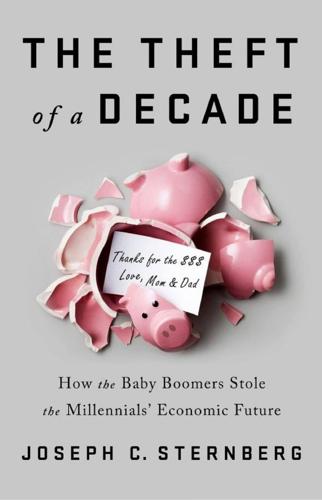
The Theft of a Decade: How the Baby Boomers Stole the Millennials' Economic Future
by
Joseph C. Sternberg
Published 13 May 2019
But health insurance premiums weren’t included in the wage controls, and the Internal Revenue Service in 1943 ruled that premiums would enjoy the same tax benefits for employers as wages.42 A cockamamie health care market was born. In some ways, Obamacare did try to break this nonsensical link between employment and health insurance. The marketplaces the law created for individuals to buy insurance, sometimes with subsidies, were billed as major boons especially to self-employed entrepreneurs, freelancers, and gig workers—categories that include a lot of Millennials. By allowing young adults up to age twenty-six to stay covered on their parents’ health plans, the law at least severed the tie between Millennials’ health coverage and their own employment, although it still left us beholden to our parents’ fringe benefits at their jobs.
…
Or rather, surveys can be as confusing as the complex new gig economy itself, both for workers answering the questions and for the government data-collectors asking them. For example, will a full-time employee at a large company think of renting out her spare room on Airbnb for extra cash as a “job”?* Differences in how surveys phrase the question may account for differences in the number of gig workers various polls find. For instance, another survey found that 24 percent of Millennials had reported working a freelance or independent contractor gig in 2015, compared to only 9 percent of Baby Boomers.46 Meanwhile, measurements of what people actually do and how they actually work tend to point to a much bigger gig economy than surveys.
…
” * Writing this chapter taught me that I myself am now part of the “gig economy” by some definitions, since the money I earned from my publisher was in addition to my salary from the Wall Street Journal, and I wrote the book in my spare time around the obligations of my main employment. † Intuit owns TurboTax. Note that the company’s definition of a gig worker in much of its research is broader than people working via smartphone apps and includes a lot more “traditional” freelancers and contractors. CHAPTER 3 Human-Capital Punishment SUZE ORMAN CHANGED MY LIFE. I first got hooked on the charismatic personal finance guru’s weekly CNBC show right around the time the 2008 financial crisis hit, and it was mesmerizing.
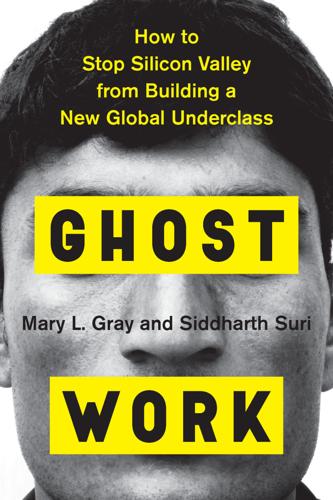
Ghost Work: How to Stop Silicon Valley From Building a New Global Underclass
by
Mary L. Gray
and
Siddharth Suri
Published 6 May 2019
The subtext of this work is that workers remain invisible. Standing up and calling attention to yourself is a fast track to getting a “bad reputation.” Jeff Bezos never wrote back. Unfortunately, Riyaz’s case is not unusual. According to a national survey we conducted in partnership with Pew Research, 30 percent of on-demand gig workers reported not getting paid for work they performed. Workers can lose their job and wages, with no explanation and no opportunity to appeal the cancellation of their account. Companies decide how, or if, workers will receive final payment for work completed. People do not just lose their account access—many workers, like Riyaz, lose their livelihoods.
…
Pal, Mahuya, and Patrice Buzzanell. “The Indian Call Center Experience: A Case Study in Changing Discourses of Identity, Identification, and Career in a Global Context.” Journal of Business Communication 45, no. 1 (January 1, 2008): 31–60. https://www.doi.org/10.1177/0021943607309348. Parry, Thomas Fox. “The Death of a Gig Worker.” The Atlantic, June 1, 2018. https://www.theatlantic.com/technology/archive/2018/06/gig-economy-death/561302/?utm_source=atltw. Pennington, Shelley, and Belinda Westover. “Types of Homework.” In A Hidden Workforce, 44–65. Women in Society series. London: Palgrave Macmillan, 1989. https://doi.org/10.1007/978-1-349-19854-2_4.
…
By comparison, it took three years for national relief efforts to distribute even 12 percent of international funds raised for reconstruction, and it was limited to helping those who owned their own property, further deepening social fault lines. Almost 75 percent of the money from the company’s Earthquake Relief Fund went directly to CloudFactory’s workers and their families, and the rest was donated to local government agencies and nonprofits offering food and shelter around the city. [back] 2. Thomas Fox Parry, “The Death of a Gig Worker,” The Atlantic, June 1, 2018, https://www.theatlantic.com/technology/archive/2018/06/gig-economy-death/561302/?utm_source=atltw. [back] 3. See National Labor Relations Board, 322 U.S. 111 (1944); Weil, The Fissured Workplace, 185–86. [back] 4. Aaron Smith, Shared, Collaborative, and On Demand: The New Digital Economy (Washington, DC: Pew Research Center, 2016), http://www.pewinternet.org/2016/05/19/on-demand-ride-hailing-apps/.
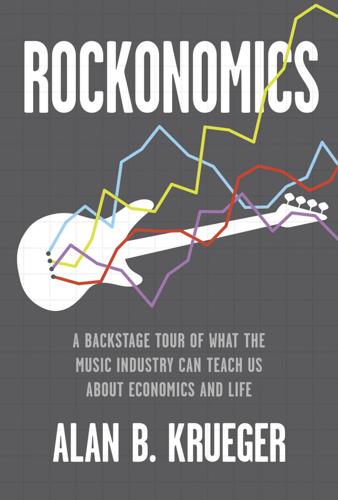
Rockonomics: A Backstage Tour of What the Music Industry Can Teach Us About Economics and Life
by
Alan B. Krueger
Published 3 Jun 2019
The health insurance coverage rate of musicians jumped to 86 percent by 2018.9 Not surprisingly, musicians and other freelancers have generally been more supportive of the controversial law than the public as a whole.10 Given the mental stresses and physical wear and tear that a musical career entails, the low rate of health insurance coverage historically has been a serious problem for musicians. Musicians, like other gig workers, struggle to find enough work. New Jersey musicians I’ve interviewed often say that gigs used to be easier to come by, and that their pay—around $100 for each musician per performance—has hardly increased over recent decades.11 Another challenge musicians and other gig workers face is getting paid. Musicians tell countless stories of being stiffed by club owners and promoters. Their experience is not unique. A quarter of self-employed workers overall say that they were paid less than they were owed at some point in the past year.12 Aretha Franklin and many others used to insist on being paid in cash before performing.
…
And the proliferation of Uber-like online platforms that match musicians with gigs—such as GigTown.com, Gigmor.com, and ShowSlinger.com—is likely to propel freelance musical work in the twenty-first century. Musicians have long been at the vanguard of the gig economy, facing many of the same problems that gig workers face today: obtaining health insurance, saving for the future, paying down debt, planning for taxes, and recordkeeping. In 2013, before Obamacare established health insurance exchanges and provided income-based subsidies for individuals to purchase insurance, 53 percent of musicians lacked health insurance, which was triple the uninsured rate for the population as a whole.8 Self-employed workers as a whole saw a greater rise in health insurance coverage after Obamacare passed than other employees.

Recoding America: Why Government Is Failing in the Digital Age and How We Can Do Better
by
Jennifer Pahlka
Published 12 Jun 2023
This is why we have programs like unemployment insurance—to reduce both human suffering and a further slowing of the economy. When COVID hit, the scale of job loss merited more than the regular aid. Congress authorized not only increased payments for regular unemployment insurance claimants but also special assistance to cover gig workers, a higher child tax credit, food benefits to help feed children who would otherwise have had access to free school meals, emergency rental assistance to keep people from losing their homes, and direct stimulus payments, among other measures. Millions of Americans were grateful for Congress’s willingness to act in this time of crisis.
…
People whose claims are denied can appeal to the California Unemployment Insurance Appeals Board, and the board overturns the EDD’s identity verification decisions around half the time.5 So the real rate of fraud among the flagged applications that quarter was probably just a few hundred people out of almost 200,000. In other words, only about 0.2 percent of applicants who were flagged for identity verification turned out to be committing fraud. On the other hand, the claims filed in bulk by organized crime, with their perfectly matched data, were sailing through the system. Aiming to help gig workers during the pandemic, Congress had set up a new type of unemployment assistance that didn’t require states to verify claimants’ prior employment, making it much easier to get benefits. And applications to this particular program were spiking periodically in ways that didn’t match the trends in regular unemployment claims and could not be explained by the normal patterns of legitimate claimants.
…
See Supplemental Nutrition Assistance Program Ford, Henry foreign language requirements forms computer set-up variations and policy “vomited” onto fraud prevention Free File Alliance Gall, John Gall’s Law Gascón, George Gaudet, Genevieve General Data Protection Regulation (EU) General Services Administration (GSA) digital unit 18F GetCalFresh Gibson, Sloan gig workers Global Entry website Global Positioning System (GPS) satellites Glueck, Kenneth Google Gore, Al government. See also federalism; and specific agencies, levels of government, and programs digital capacity needs and shutdown of 2013 trust in Government Accountability Office governors Great Depression Great Recession green cards green-screen emulators grocery shopping, with EBT Guarino, Dave H&R Block hardware, outdated Harvard Business Review Harvard Kennedy School healthcare.gov deadline and limitations on vendors functionality vs. complexity and product management and live updates reasons for failure of rescue after launch failure and rulemaking and user testing and health care providers, two unique identifiers and.

The Passenger
by
AA.VV.
Published 23 May 2022
They weren’t alone in their disapproval; musicians and truck drivers also often fell between the cracks of typical employment classification, and they, too, sought special consideration lest their professions be adversely affected. But once refused inclusion in the exemption list, Uber and Lyft took a different stance altogether; they chose to disregard AB5 in its entirety and refused to reclassify gig workers as employees. In turn, the California attorney general sued the rideshare companies, and in the summer of 2020 the court ruled against Uber and Lyft and said that they were misclassifying gig workers as independent contractors. On 10 August 2020, the companies were given ten days to comply with AB5, but they threatened to shut down their rideshare services across the state. Through the app, users were sent an ominous message declaring services to be terminated across California on 20 August.

Don't Be Evil: How Big Tech Betrayed Its Founding Principles--And All of US
by
Rana Foroohar
Published 5 Nov 2019
Many experts believe that the rise of the gig economy is a key reason for stagnating wages, as it has accentuated the power imbalance between workers and companies that has been increasing for the past forty years or so with the decline of unions, and the deregulation of industry in general. The Plight of the Gig Worker “Gig work” seems to have reached a new apex with the rise of companies like Uber. Consider the typical non-medallion taxi driver in New York, who might work for three or more companies at once: Uber, Lyft, and perhaps even an unlicensed cab firm. There is some truth to the claim that such people are essentially entrepreneurs, with all the freedom that working for themselves entails.
…
In the absence of workers having collective power, digital technology, AI, and cheap surveillance technology will combine to make information advantages that accrue to employers…at a scale and intensity we’ve never seen before.”19 Superstars Take All There’s no question that low-level gig workers—from handymen to yoga instructors to childcare providers—get the short end of the stick in the digital economy. But for highly educated professionals, the digital gig economy is pure upside: a way to earn more money in less time, in ever more flexible ways. Consider the life of a freelance management consultant.
…
Rosen predicted that the rise of superstars would be bad for the bottom line of everyone else, and he was all too right.23 Today, labor’s share of the pie is at its lowest point in half a century. But Silicon Valley companies like Uber, Google, Apple, Facebook, and Amazon—as well as their top-tier workers—are enjoying the superstar effect in spades.24 This divide has a massive and underexplored impact not just on individual gig workers, but on the economy at large. Many economists believe that one of the reasons that wage growth remains relatively flat is because of job-disrupting technology itself. Rob Kaplan, the head of the Dallas Fed, believes that technology—and in particular its penetration more broadly and deeply into non-tech industries—is a key reason that we haven’t seen wages rising, despite unemployment being at nearly pre–financial crisis lows.

The Equality Machine: Harnessing Digital Technology for a Brighter, More Inclusive Future
by
Orly Lobel
Published 17 Oct 2022
Jeppesen and Lakhani, “Marginality and Problem-Solving Effectiveness,” 1020. 33. Orly Lobel, “The Debate About How to Classify Workers Is Missing the Bigger Picture,” Harvard Business Review, July 24, 2019, https://hbr.org/2019/07/the-debate-over-how-to-classify-gig-workers-is-missing-the-bigger-picture; Orly Lobel, “The Gig Economy and the Future of Employment and Labor Law,” University of San Francisco Law Review 51, no. 1 (2017): 51; Orly Lobel, “We Are All Gig Workers Now: Online Platforms, Freelancers and the Battles over Employment Status and Rights During the COVID-19 Pandemic,” San Diego Law Review 57, no. 4 (November–December 2020): 919. 34. Robert Bartlett, Adair Morse, Richard Stanton, and Nancy Wallace, “Consumer-Lending Discrimination in the FinTech Era,” Journal of Financial Economics 143, no. 1 (January 2022): 30. 35.
…
And yet, technology allowed us to stay connected and hold conferences, discussions, and collaborative meetings all around the world, including in Australia, Brazil, Canada, China, Colombia, Costa Rica, England, France, Germany, Greece, Holland, India, Israel, Italy, Japan, Korea, Mexico, Portugal, Scotland, Sweden, and the United States. The book builds on some of my published articles, including “We Are All Gig Workers Now: Online Platforms, Freelancers and the Battles over Employment Status and Rights During the COVID-19 Pandemic” (San Diego Law Review, 2020); “Biopolitical Opportunities: Datafication and Governance” (Notre Dame Law Review Reflection, 2021); “Exit, Voice and Innovation” (Houston Law Review, 2020); “Knowledge Pays: Reversing Information Flows and the Future of Pay Equity” (Columbia Law Review, 2020); “Coase and the Platform Economy,” in The Cambridge Handbook of the Law of the Sharing Economy (Cambridge University Press, 2018); (with Kenneth Bamberger) “Platform Market Power” (Berkeley Law and Tech Journal, 2018); and “The Law of the Platform” (Minnesota Law Review, 2016).

Road to Nowhere: What Silicon Valley Gets Wrong About the Future of Transportation
by
Paris Marx
Published 4 Jul 2022
In September 2019, the decision was codified into law when California’s state legislature passed Assembly Bill 5, which set a deadline of January 1, 2020, for employers to reclassify their workers—and the emphasis was placed on companies in the gig economy, including Uber and Lyft. January 1 came and went without gig workers’ status changing, but they kept pushing lawmakers to ensure the law was observed. In May 2020, California’s attorney general and the city attorneys for San Francisco, Los Angeles, and San Diego took Uber and Lyft to court for misclassifying their workers, and the following month the PUC ruled that drivers for Uber and Lyft were employees, not contractors.
…
Instead, even the sidewalk is imagined to be reoriented for other uses. At the same time as tech has been aggressively trying to get us to stop walking, it has also been creating a service economy designed to deliver whatever it is people want to their doorsteps as quickly as possible. This takes the form of on-demand apps where gig workers with terrible pay and no protections hastily try to fulfill as many orders as possible so they can eke out a living, and ecommerce services—particularly orders made through Amazon—where the expectations for delivery have fallen to a couple of days, if not hours. This also has consequences for urban living.

Care: The Highest Stage of Capitalism
by
Premilla Nadasen
Published 10 Oct 2023
The poor and working class are usually considered important to the degree that they can meet the needs of middle- and upper-class Americans. The welfare system is rarely brought up as part of the care discourse, even though it can be one of the most important sources of support for the care work of poor families. On top of that, poor single mothers, people who are disconnected from the labor market, many gig workers, and undocumented immigrants are shut out of employment-based benefits such as childcare tax credits or the Family Medical Leave Act. As the remnants of the welfare state have become even more punitive, the poorest families must try to survive without reliable childcare, quality education, health care, and economic security.
…
Domestic worker organizing, for example, offers a model of resistance applicable to a growing number of precarious workers in a neoliberal economy. The declining status and increasing precarity of other workers under neoliberalism is coming to resemble that of domestic workers, who have always been gig workers and independent contractors. The organizing strategies employed by domestic workers and other social reproductive workers point the way toward new forms of working-class protest. There is much to learn about organizing precarious workers from this group of people that has struggled historically to claim the benefits of social citizenship.

Vassal State
by
Angus Hanton
Published 25 Mar 2024
Whatever the conditions, jobs are found through an app, which is often a US-owned platform taking a fee for matching workers with work. Giant automated agencies like Taskrabbit naturally demand their pound of flesh, extracting a royalty from British labour. And firms such as Uber and Deliveroo are built almost exclusively on zero-hours ‘gig workers’. A typical such worker, Anton Barker, told me his experience: ‘The training course to become a Deliveroo cycle courier took much less than a day – all they did was show me how the app works and gave me my branded kit. After that I just did what the app told me – I never met colleagues. It was totally impersonal.
…
I liked working in a hilly part of London because I got really fit, but in the winter I also got really cold. I was paid £7 an hour plus £1 for each meal delivered and it went OK for three months until I got an injury. Then I was out of work and on my own.’ The government has done little to stop the growth of insecure working conditions and some of its contractors even use gig workers for cleaning and catering at government buildings. Instead of challenging the working conditions and considering whether this is debasing the labour market, government ministers focus on making sure such workers are properly taxed.42 The gig economy has created a workforce toiling long hours for the minimum wage – and many claim they earn even less than that.
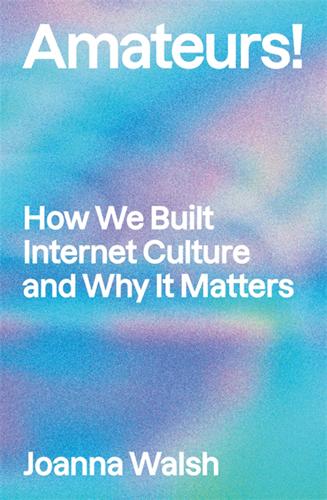
Amateurs!: How We Built Internet Culture and Why It Matters
by
Joanna Walsh
Published 22 Sep 2025
If, as the poet Fred Moten and the scholar and activist Stefano Harney notice in All Incomplete, capitalism ‘can’t incomplete what is already incomplete’, nor can it further amateurise amateurism. The amateur is insulated from exploitation because as soon as they enter into a monetary relation they become professional, and their work, a matter of labour law. This is a double-edged privilege, always putting the amateur in danger of exploitation. Though some unionised gig workers (e.g. London’s Uber drivers) have been successful in gaining employee rights, the Reddit strikers could not be considered employees because the nature of their work was sporadic and voluntary, controlled by that amateur impulse: a love of specific subjects, objects, processes. Love and art are both forms of paying attention.
…
A., 148 fascism, resurgence of, 155–6 female aesthetic expression, 166–7 female beauty, critique of the standards of, 142–3 feminine performance, of lack, 136–46, 137 feminisation, 15, 142 feminist representation, 142 Ferrante, Elena, 135–6 fiction, 95–6 truth in, 189–93 fictional people, 132 fictionalisation, 95 financial security, 210 financialisation, 213 finished product, 43 Fisher, Joseph P., 95 Fisher, Mark, 23, 48, 75, 106, 129 Flarf, 45–6 Flota, Brian, 95 folk art, 160 folksonomy, 159 form, and content, 35 Foucault, Michel, 33–4, 131, 132, 202 4chan, 31, 42, 48, 73 #gamergate, 30 fragmentation, forms of, 80 fragments, aesthetic history, 104–5 frame-breaking, 89 frames, 86–7 Frankfurt School, 155 Fraser, Nancy, 168–9, 169–70 free content, proliferation of, 3 Frere-Jones, Sasha, 83 Freud, Sigmund, 12, 57, 63–4, 66 future, the, nostalgia for, 69–73, 70 futurism, 57 #gamergate, 30 gamification, 43–4 Gardner, Drew, 46 Garrett, Marc, 22 Gates, Bill, 216 Gay, Roxanne, 195255 gaze as action, 54 and art, 127 machine, 57 male, 143 technological, 62, 72 Gebru, Timnit, 122–3, 126 gender, and race, 166 Genette, Gérard, 66 gentleman amateur, the, 7–8, 11 geographic metaphors, 219–20 Gevison, Tavi, 144–5 gig workers, 218 Gigapixel, 108 Girl with a Pearl Earring (film), 121 Girl with a Pearl Earring (Vermeer), 105, 105–7, 121–2, 124, 129–30 The Girl with the Pearl Earring (Chevalier), 121–2, 129–30 Glaze, University of Chicago project, 117 Gompertz, Will, 21 Goodman, Nelson, 210 Google, 1, 205 Ethical Artificial Intelligence Team, 122 Google Adwords, 114 Google Books, 116 Google infamy, risk of, 187–9 Goop, 137, 145 governance, 222 GPT large language model, 113 GPT NLP (natural language processing) models, 104 Greenberg, Clement, 24 Grey Academia, 154, 163 Grossman, Lev, 5 group feeling, 103 Guattari, Felix, 54, 84, 86, 98 Gyford, Phil, 57 Habermas, Jürgen, 191, 192–3 hackable environment, 87 hackers, 216–18 hacks, 219 Hall, Stuart, 169 Hallmark Cards, 21 Halter, Ed, 16–18, 21 Hammer, Barbara, 150–2 Hanisch, Carol, 198 happenings, 82, 98 Hardin, Garrett, 213 Harney, Stefano, 218 Harper, Adam, 71 Harvey, David, 151, 213 hashtag activism, 201 hate campaigns, 30, 142 hauntology, 73–6 Hebdige, Dick, 24, 93, 95, 166, 168, 171, 172 Hediger, Vinzenz, 19 Hegel, Georg Wilhelm Friedrich, 133, 206–7 Heidegger, Martin, 132–3, 136 Hepola, Sarah, 194, 194–5 Herbert, Martin, 76 Heti, Sheila, 132, 133 hinge algorithms, 1 Hirschman, Albert, 92 historical past, aesthetic colonisation of, 74–5 Holmes, Anna, 183–4 Holocaust, the, 95–6 Homebrew Computer Club, 216 ‘Homesick for a Place I’m Not Even Sure Exists’ (meme), 70 horizontal platforms, 89 Horkheimer, Max, 154–5, 160, 206 Houellebecq, Michel, 131 Hughes, Robert, 107 Huh, Ben, 29, 30, 33–4, 35, 40, 49, 51 humour, AI and, 101 hyperlinks, 147, 150 hyperobjects, 47 hysterical criticism, 182–3 hysterical realism, 182 IBM, 69 idealism, and the market, 222 identification, 10–11 identity, 137, 158 and aesthetic representation, 164, 166–71 and consumer choice, 162 contingent, 167 Fraser’s model, 168–9 marginalised political, 167–8 offline, 162256 online, 161–4, 165, 166–71, 196 political, 161 reification of, 168–9, 169–70 remaking, 16 status model, 168–9 trash essays and, 195–6 identity choice, 171 identity-in-progress, 163 image addiction, 125–6 image descriptors, 119 imaginary products, 69 immediacy, 91 inauthenticity, 73, 128 individualism, 5, 8, 16, 181, 218 Industrial Revolution, 14–15, 154 ineptitude, 18 influence, long-term, 18–19 influencers, 14, 138–42 information capitalism, 35, 211 information overload, 36 Instagram, 6, 23, 89, 90, 106, 208, 220 body-positive movement, 146 creators, 139–40 Excellences and Perfections (Ulman), 137, 138–42, 143–5, 145–6 intent, 177–8 interaction, 4–5 interest, 49 internet aesthetics, 22 internet conditions, 2–3 internet eras, 202 internet-native, aesthetics, 52 intuitive creativity, 184 Israel, targeting of Hamas members, 56 It Follows (film), 62 Jackson, Robert, 58 Jameson, Fredric, 74, 96–7, 113, 125–6, 181 Japanese economic boom, visual ephemera, 72 Jezebel (online magazine), 176, 183 incest essay, 179–80, 188–9 style, 183–4 jokes, 32 jouissance, 12 ‘Judge Dredd’ (comic strip), 93–4 judgement, 29, 183, 205 juxtapolitics, 169, 205 Kant, Immanuel, 21 and aesthetic experience, 36–7 and aesthetic judgement, 24, 29 and aesthetics, 9–10, 205 magnitudinal sublime, 37–8 Kardashian, Kim, 142 Karp, David, 55 Kiki de Montparnasse, 139 Kitay, Kat, 208–9 kitsch, 20–1, 61, 67, 128–9, 160–1 aesthetic alienation, 208 Fisher’s, 75 music, 74 nostalgia for, 75 Knapp, Steven, 34 Know Your Meme, 33–6, 36, 37 knowledge, love of, 36 Kornbluh, Anna, 91 Kottke, Jason, 55 Kristeva, Julia, 89–90, 185 Lacan, Jacques, 12, 13, 38, 147, 148 lack, feminine performance of, 136–46, 137 LAION, 118–19 Land, Nick, 91–2, 94 language, and AI art, 123–4 language use LOLcats, 39–41 racialised, 41–2 large companies, domination of the internet, 219–20 L’Arrivée d’un train en gare de La Ciotat (film), restoration, 107, 108 Lavender AI, 56 Lefebvre, Henri, 6, 14–16, 208–9, 210 legacy media, 47 aesthetics, 52 borrowings from, 41 leisure, 14–16, 45 commodified, 13 illusion of, 90 leisure/work paradigm, 15 Les Immatériaux (exhibition), 209 Lettrism, 161 libertarianism, 7 lifestyle journalism, 188 likes, 2, 28 Linux, 215–16257 Liszewski, Andrew, 108 LiveJournal, 215–16 liveness, 97 LOLcats, 27, 27–9, 50 aesthetic appreciation of, 38–41, 39 aesthetic reactions, 28 avowed triviality, 49 and content creation, 49 language use, 39–41, 42 novelty, 50 origin, 30 pleasure of, 47 production process, 28 purposive purposelessness, 44 LOLspeak, 40, 42 London, Furtherfield Gallery, 22 London Review of Books (magazine), 65, 182–3 Lonergan, Guthrie, 210–11 Lorenz, Taylor, 184 love, 218–19 low-class art, 20 lowest common denominator, estrangement with, 103 Lumière brothers, L’Arrivée d’un train en gare de La Ciotat, 107, 108 Lyotard, Jean-François, 47, 125, 209 machine gaze, 57 Macintosh Plus, 72, 78 McLuhan, Marshall, 135, 139 McNeil, Joanne, 54 Magee, Mike, 46 mainstream recognition, 20 male gaze, 143 male narratives, 11 Man Ray, 139 Marcuse, Herbert, 24, 43–4, 154–5, 166–7 Markbreiter, Charlie, 33 market, the, and idealism, 222 Martinussen, Einar Sneve, 54 Marx, Karl, 84, 206–7 mashups, 103, 105, 105–7 masses, the, fear of, 181 Massumi, Brian, 170, 208 Mbembe, Achille, 166–71 mean image, the, 119 mechanical art, 37 media technologies, 83–4 Meme Map, Web 2.0, 85, 86 memes, 53, 220 aesthetic appreciation of, 37–41 Blackface, 41–2, 42 conceptualisation, 28, 29 financial value, 30–2, 33 originators, 33–5 ownership, 32–3 snowclones, 39, 39 meming, 28–9, 29 anonymity, 30–1 memory computer, 64 locations for, 67 return to objects, 77 screen, 63–5, 66 screen memoirs, 65–9 values, 63–4 memory-leak, 64 Merleau-Ponty, Maurice, 124, 127 Meta, 115 Microsoft, 121 Minga, 157 misogyny, 30, 184 Mitchell, Elma, 147 mixtapes, 79, 83 moderators, 203–4 modern art, generative principle of, 19 modernism, 127–8, 129 modulation, 39 monetisation, 124–5 monetised production, 212–13 Moore, Marcel, 139 moral judgement, 183 morality, 178 Morton, James, 219 Morton, Timothy, 47 Moten, Fred, 218 motivation, 6 Muñoz, José Esteban, 162 Musk, Elon, 82, 200 Nakagawa, Eric, 29, 30, 40, 51 Nancy, Jean-Luc, 82, 99 narcissism, 152, 181 narrativising, of the self, 190 Nasty Nets internet surfing club, 210–11 Nedroid, 18258 net art, aesthetics, 21–2 Netflix, 44 Neukirchen, Chris, 55 Neuro-sama, 122 New Aesthetic, the, 53–9, 62, 70–1, 73, 76 New Inquiry (magazine), 33 new media, 52–4, 75 New Narrative movement, 197 New York Times Magazine (magazine), 137 New York Times (newspaper), 120, 159 New Yorker (magazine), 94 NFTs (non-fungible tokens), 32–3, 212–13 Ngai, Sianne, 23, 36, 37–41, 43–6, 198–9 aesthetic categories, 27–8, 29, 35, 37, 49, 50 on aesthetic judgment, 163 analysis of It Follows, 62 on envy, 145, 146 gimmicks, 219 Ugly Feelings, 97–8, 184 zany workers, 141, 206 Nightshade, University of Chicago project, 116, 117 9/11 Memorial and Museum, 98–9 noble picturesque, the, 60–2 noise, 93 Northwestern University, Illinois, 204 nostalgia, 57, 58, 60–2, 67 for the future, 69–73, 70 for kitsch, 75 nostalgia mode, 74–5, 76 nostalgic aesthetics, 20 Not Safe For Work, 44–5 nothing, production of, 13 Noys, Benjamin, 91–2, 93 objectification, 136–46 offline identity, 162 Olson, Marisa, 142–3, 210–11 online aesthetics, 21–2, 153 online appearance, 136–46 online choice, 137 online creations, as art, 2 online creators, professional, 3 online engagement, 3 online experience, immaterial appearance, 81 online identity, 161–4, 165, 166–71, 196 online platforms, user-friendliness, 3 online vocabulary, 220 Ono, Yoko, 141 OpenAI, 118, 204, 205–6, 209 openness, 218 open-source, 215–16 O’Reilly, Tim, 5, 86 original work, the aura of, 10, 31, 32 originators, 33–5 Other Voices, Other Rooms (Capote), 133–4 outdatedness, 52 outsourcing, 90 Ovation Technologies, 69 overexploitation, and digital commons, 213 oversupply, 33 Oyler, Lauren, 182–3, 185 Paltrow, Gwyneth, 137–8, 145 Papin sisters, the, 147, 148, 151–2 para-academic practice, 199 para-epistemophilic feeling, 36 Paraflows Urban Hacking Festival, 30 parodies, 35–6 participation, via action, 159 pastiches, 35 peer-to-peer online services, 211 people, the, 103 Percy, Walter, 39 Perec, Georges, 44 Perelman, Bob, 113 performance, 16 performance art, 82, 136–46 performative communication, 200–1 personal data, collection and sale of, 7 personal essays, 175–6, 181–2 personality, 154 Peterson, Latoya, 185 @pharmapsychotic, 108–12 photographers, 139–40 photographs, 17, 114, 140 photo-identity, 120 photorealism, 112–13 picturesque, the, 61–2, 69, 76 pile-of-poo emoji, 46, 46259 Pinterest, 208, 213 Pixels, Kane, 73–4 platform capitalism, 202–3 platform owners, 89 Plato, 7 play, 44–5, 206 pleasure principle, 12 plot-driven narratives, 172–3 poetry, 9, 46 Poetry Virgins, 147, 148 political identity, 161 political representation, 92–3 politics aestheticisation of, 143 as aesthetics, 201 Poole, Christopher, 30 poomoji, 46, 46 poor images, 60, 62 postinternet art, 142–3, 210–11 postmodernism, 72, 76, 125–6, 129 Pound, Ezra, 19 prediction, ideology of, 119–21 Presser, Shaun, 115–16 Prin, Alice, 139 print media, 5 private life, 195 pro/am division, 17 process, concern with, 56 production means of, 11 production of, 98, 217 separation from reproduction, 161 professional modes, amateur adoption, 16 professional skills, bypassing, 215 professional status, desire for, 3 professionalisation, 14 professionalism, amateurised, 1 profiles, 7 proletarian amateurs, 8, 9–10 prompt engineering, 114 Propp, Vladimir, 160 public voice, 195 public/private division, 16 purposive purposelessness, 44–5 Quaranta, Domenico, 22 race, and gender, 166 racialised language use, 41–2 racism, 41 radical naturalism, 184 radical trust, 6, 159, 205 radical we, the, 3 Rancière, Jacques on art from everyday life, 104–5 aesthetic regime, 208 on audience, 211 classical Greek spectator, 127 on dangerous classes, 26 on performance, 16 on play, 44, 49 and politics, 93, 99, 205 and risk, 19–20 rating, 139 ReadWrite, 161 readymades, 17, 31 realism, 106–7, 184 reality, 20 experience of, 10 and representation, 142 recognition, 20 Reddit, 203–4, 219 Reisner, Alex, 115 Relational Aesthetics, 18–19 remade material, 158 remix art, 43 remix culture, 79, 161 Render Me Tender (Armstrong), 125 repetition, 106, 149, 151 re-politicisation, of art, 11 representation crisis in, 92–4 and reality, 142 of women, 119 reproduction, separation from production, 161 research-based art, 35–6 retrofuturism, 57 revivalism, 76 rewards, 29 Ricoeur, Paul, 34 Riefenstahl, Leni, 177 Rights Alliance, 115 Riley, Denise, 134 risk, 18–20 RLHF (reinforcement learning from human feedback), 205–6260 romanticisation, 157 Romanticism, 103 Ronell, Avital, 136 Rosler, Martha, 147 Ruskin, John, 61–2, 69 Russell, Legacy, 97 Saito, Yuriko, 128 salaried work-time, outside of, 216–17 Sato, Atsuko, 32 Schopenhauer, Arthur, 37 sci-goth, 57 scrapbooking, 158–60 screen, the, artifice of, 10 screen memoirs, 65, 65–9 screen memory, 63–5, 66 search engine optimisers, 114 Sedgwick, Eve Kosofsky, 162, 198 self, the, narrativising of, 190 self-accounting, 134–35 self-creation, 140 self-deception, 133–4 self-identification, 162 selfies, 6, 103, 140 AI art, 108–12, 109, 110, 111, 112, 113 double sense of, 144–5 trash essays as, 187–8 self-possession, 195 self-quantification, 36 self-representation, 136–46 self-transformation, 163 sensations, 37 sensus communis, 29 September 11th terrorist attacks, 78, 94–5, 96, 98–9 servers, ecological cost of, 76–7 sexual content, 45 shareholder profits, 203 Shiryaev, Denis, 108 shock of the new, the, 107, 128 shock of the real, the, 107 Shrimp Jesus, 214, 214–15 side-hustles, 3, 9, 14 The Simpsons (TV show), 47 skeuomorphic, 53 slickness, 18, 71–2, 101 slow violence, 95 snapshots, 64–5 snowclones, 39, 39, 51–2 social art, 48–9 social contract, the, 203 social media, 6, 7, 92, 135, 161, 189–90, 221–2 social mobility, 11, 13–14 social reproduction, 206–7 Sollfrank, Cornelia, 207 @soncharm, 101, 102, 103 Sontag, Susan, 66, 177–9, 182–5 space aesthetic, 220 creation of, 222 cyber, 219 geographic metaphors, 219–20 ownership, 89 virtual, the as, 86 Spahr, Juliana, 97–8 spammers, AI and, 214 spatial metaphors, 86–7 Speaklolspeak.com, 51 spectatorship, 36 speed, metaphors of, 91–2 Speed, Mitch, 209–10 Spellings, Sarah, 173 Spike Art Magazine (magazine), 208–9 sport, 43 Spotify, 89 Squid Game (TV show), 44 Srnicek, Nick, 92 Stable Diffusion, 118–19 Stamboliev, Eugenia, 215 Stanford Institute for Human-Centered Artificial Intelligence (HAI), 123 Starobinski, Jean, 185 steampunk, 57 Stein, Gertrude, 38 StereoSet, 123 stereotypes, 10–11, 119, 123 Sterling, Bruce, 54, 55, 56–9 Stewart, Kathleen, 162 Steyerl, Hito, 9–10, 60, 62, 117, 119, 209 Stiegler, Bernard, 205, 215, 216–17, 218 Strategy (magazine), 6 Stubbs, David, 94 stuplimity, 37–38, 39–40, 42261 subcultures, 24, 166–7, 171–2, 217–18 sublime, the, 38, 47, 61, 103, 125 subreddits, 203–4 Substack, 6 suffering, engagement with, 141 suggestion and suggestiveness, strategies of, 148 Sullivan, Gary, 45–6 surface picturesque, the, 61–2, 76 surplus-enjoyment, 12–13 surplus-value, 11, 12, 13 Surrealism, 54, 161 surveillance cams, 54 SweetcrispyJesus, 154 tagging, 159 tape recorders, 83 taste, 13, 103, 128 tattoos, 171 tax, 7 taxonomy creation, 2 Tay, 121, 122 Taylor, Brandon, 190 techno-capitalist worldview, 162 technological gaze, 62, 72 technoromanticism, 209 temporo-cultural disruption, 76 Tencent, 204 terms, Jathan Sadowski, 123 TESCREAL, 126 textual meaning, 131–6 TikTok, 6, 89, 220 Time (magazine), Person of the Year, 5 time and temporality, 76, 80, 86 accelerationism, 91–9 as a medium, 91 pre-internet media, 96–7 spending, 89 time spent scrolling, 91 Tofuburger, 30 Tolentino, Jia, 176, 177, 179–80, 189, 193, 197–8 Topaz Labs, 108 Torres, Émile P., 126 Torvalds, Linus, 215–16 tradition, 80, 81 transcription, 79–80, 84, 97–8 transgression, 19–20 transmission, 79–81, 90 trash essays, 175–99 boom, 180 clickbait prurience, 183 conceptualisation, 176–7 and content, 177–81 content-as-style, 185–7 as debut writing, 177 as economic event, 194 exclusion, 183 fear of, 181 forward movement, 185–6 frame story, 194–6 hysterical criticism, 182–3 identity and, 195–6 intent, 178, 180 methodology, 198 misogyny, 184 and narcissism, 181 normalisation of, 185 and personal essays, 181–2 risk of, 187–9 as selfies, 187–8 and style, 177–80, 183–7, 197 stylelessness, 184–5 writing, 197 trust, 159 truth, 189–93, 198 tumblelogs, 55–6 Tumblr, 23, 54, 55–6, 60, 106, 208, 213 Turing, Alan, 63 Turks, 119 Twitter, 6, 89, 103, 134, 203, 220, 221 demise of, 200–2 Ugrešiç, Dubravka, 66, 67 Ulman, Amalia, 137, 138–46 Unebasami, Kari, 29, 30, 40, 51 University of Chicago, 117 University of Warwick, Cybernetic Culture Research Unit (CCRU), 94 unpaid labour, 5 unrealism, 129 user space, 86 user-friendliness, 3 user-generated content (UGC), 5–6, 16 users, need for, 90 Valéry, Paul, 127 value, 161262 Vanity Fair (magazine), 54, 57 vaporware, 69, 70 vaporwave, 69–73 doom-mongers, 74 hauntology, 73–6 revivalism, 76 vectoral aesthetic capitalism, 89–90 vectoralist classes, 213 vectors, 89 Ventura, Claude, 151–2 Venvonis, Gregory, 171–2 Vermeer, Johannes, Girl with a Pearl Earring, 105, 105–7, 121–2, 124, 129–30 Vestiaire Collective, 121 virtual, the, as space, 86 virtual commodities, 137 voices, 92–9 vulgar, the, 103, 185 vulnerability, 170 Wal, Thomas Vander, 159 walking while black meme, 19 Warhol, Andy, 31, 106 Wark, McKenzie, 89, 213, 216, 217, 219, 220 water scarcity, 209 Watkins, D., 187–8, 188–9, 196 we, use of, 3 Web 1.0, 5 Web 2.0, 4–7, 53, 161, 203, 211–13 meme map, 85, 86 Web3, 211, 212–15 what if thought, 126 white narratives, 11 Wiki software, 35–6 Wikidentities, 170 Wikipedia, 1, 153 Williams, Alex, 92 Willison, Simon, 118–19 Winckelmann, Johann Joachim, 104–5 Wired (magazine), 54 women, representation of, 119 Woods, James, 182 Wordpress, 215–16 Wordsworth, William, 9 work environment, 47 having fun at, 48–9 product of, 206–7 as safe place, 45 workers, as product, 206–7 working-class enthusiast, the, 8, 11 world building, 172–3 writing, 97–8 X, 205 Youngman, Hennessy, 211 your mom stereotype, 58–60, 62–3 YouTube, 71, 97 The Disintegration Loops (video), 81–3 zany, the, and zany workers, 43–4, 141 Žižek, Slavoj, 21 Zo, 121, 121–2 Zuckerberg, Mark, 81

The Rise and Fall of the Neoliberal Order: America and the World in the Free Market Era
by
Gary Gerstle
Published 14 Oct 2022
They had no one other than themselves to pay for what an employer’s share of Social Security payments would have been. They had no insurance against time lost at work for sickness. These considerations may not have mattered much at a time when markets for gig-worker services were robust and when gig workers were young enough that worries about illness or retirement savings were not a major concern. But what happened when an economic boom ended, when the fees gig workers could command for their services declined as a result, and when corporations shed payroll to get themselves through hard times (as they did massively in the winter of 2008–2009), in the process throwing many more individuals into gig earner ranks?
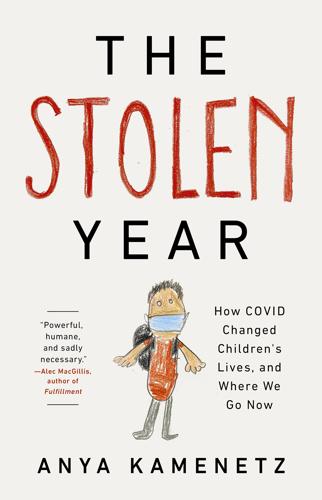
The Stolen Year
by
Anya Kamenetz
Published 23 Aug 2022
They get lower grades. They’re more likely to drop out and fail. And that “online penalty” is worse for the most vulnerable struggling students in our system.… All of the students who we’re most worried about in the pandemic, the students whose parents are most likely to lose their jobs, to be gig workers who are negatively affected, to have inadequate access to health care. Those are all the students that we would predict in advance would struggle most in the transition to online learning. In San Francisco, eleven-year-old Jonah, who has autism and dyslexia, had finally found a groove in the classroom.
…
They speak people’s languages, and they provide familiar food and culture. Parents of infants and toddlers, especially, often prefer the warmth of a home setting. The centers are also often the ones who give the overnight and odd-hours care that is increasingly necessary for the children of precarious shift and gig workers. But home-based care has historically gotten no respect, even by the already-maligned standards of childcare. Sager tells me: I would walk into a meeting with policy makers at the state or the national level, and I would say, “I’m working with family childcare educators. They are providing wonderful care for children.

Digital Empires: The Global Battle to Regulate Technology
by
Anu Bradford
Published 25 Sep 2023
Even as most countries in the world have adopted laws to regulate data privacy, no comprehensive federal privacy law has emerged from Congress. Congress has also not updated its age-old antitrust statutes that, according to many, are ill-suited to address the problems of today’s digital economy. Nor has Congress acted to regulate artificial intelligence, protect the rights of gig workers, or imposed obligations on platforms to share revenue with creators of copyright-protected content. This bare-bones US legislative framework stands in stark contrast to the EU institutions, which have legislated extensively across these and many other domains of the digital economy, as discussed in Chapter 3.
…
In 2020, the EU’s General Court overturned the Commission decision.136 The Commission is now appealing that decision to the CJEU, signaling the Commission’s continuing resolve to assert its view of fairness over the tax treatment of large tech companies.137 Employment Protections for Platform Workers The EU’s attention to fairness in the context of the digital economy is also reflected in its increasing concern about the working conditions of platform workers or “gig workers.”138 Platform work encompasses services such as food-delivery or ride-hailing services where workers perform services on demand while being connected to their customers via a platform. This type of work can enhance fairness by offering new opportunities for individuals to engage in the labor market under flexible conditions, thus benefiting workers, businesses, and customers alike.139 However, it can also undermine fairness, giving impetus for regulatory action.
…
Tech companies cannot decouple themselves from governments, and while these companies may resist government regulations, they ultimately must comply with them. They cannot coerce their way into merger clearances, refuse to pay digital taxes, or restore content that the government has ordered them to take down. Neither can they engage in targeted advertising if governments ban such targeting, or treat gig workers as independent contractors if the government has legislated for these workers to be employees. The power of these companies—their ultimate sovereignty—is limited to not doing business in jurisdictions whose laws they do not like. However, that is a distinctly costly way for them to exercise sovereignty.

Your Computer Is on Fire
by
Thomas S. Mullaney
,
Benjamin Peters
,
Mar Hicks
and
Kavita Philip
Published 9 Mar 2021
Mixing and stirring disciplines together can create a pleasant cocktail hour, but it still does not help us douse the flames that erupt when technologists design the future without seriously engaging with the past. The disciplines still come in separate bottles, with separate production histories, before they are mixed. It would be better to meld their production processes together. Engineering and history, computing and feminist politics, platform capitalism and gig workers’ unions should be in engagement and contestation from the beginning in order to have any real effect on systems before they settle into exploitative structures. To fully deal with the entanglement of people, technology, and their histories requires a deeper engagement than is possible with a mix-and-stir model.
…
To navigate the complexities of power, we should pin our hopes not on axiomatic, rule-based ethics or on the hope of finding value-neutral data to shape our technological practices. We should look instead to the arguments that social movements make for justice and accountability. Social movements raise political questions that cannot be mixed, stirred, brokered, or leveraged out of existence. When tech workers protest against large corporations, when gig workers form unions against the various forms of informal work enabled by the peer-to-peer paradigm, when communities form movements against predictive policing and other kinds of computationally enhanced inequality, they are asking us to radically rethink our design models for both technology and society.

There Is No Place for Us: Working and Homeless in America
by
Brian Goldstone
Published 25 Mar 2025
Of course many people, especially parents with young children, needed to hunker down at home. Mercifully, the federal CARES Act, signed into law at the end of March, not only added a supplementary stipend to the meager unemployment benefits offered by states but expanded eligibility to include gig workers, the self-employed, and others not typically covered by unemployment insurance. But the real hurdle—as those who’d applied, or had tried applying, for unemployment quickly found out—was not qualifying for the benefit but actually getting it. A month into the pandemic, Georgia’s unemployment system, unprepared and understaffed, seemed on the verge of collapse.
…
Natalia turned and saw Drea, a woman in her early thirties who lived at the hotel with her kindergarten-age daughter. She and Natalia had gotten to know each other in recent months. Before the pandemic, Drea had been a driver for Uber and Lyft, and when her daughter’s school closed she got by on unemployment insurance, expanded under the CARES Act to cover gig workers like her. But those payments had ended in late July. Lacking childcare and unable to find remote work, she had now fallen behind on rent and was facing an impending lockout. Now there was some awkwardness as both women realized that Natalia had been about to leave without saying goodbye. “Maybe once you get settled,” Drea said, “you can swing by here for lunch.”

The Quiet Coup: Neoliberalism and the Looting of America
by
Mehrsa Baradaran
Published 7 May 2024
But whether unconscionability dies gradually by a thousand cuts or suddenly through a committee vote, the thin reed of protection it offered plaintiffs battling unfair contract terms is no more. ONE WAY to see the demise of equitable defenses is as yet another attack on the laws protecting the poor. Arbitration clauses are prevalent in employment contracts, especially in nonunionized workplaces and gig-worker arrangements. They are standard in “fringe lending” credit arrangements like payday loans, title loans, installment loans, and subprime loans. More than 90 percent of these debt contracts also include a ban on class action suits. Those most affected are low-income people of color, the same groups that employed the unconscionability doctrine to fight coercive credit during the civil rights era.
…
Germain Depository Institutions Act (1982), 258 Garrett, Scott, 314 Gates, Bill, xxiv, 323 GDP, 215, 267, 268 Geithner, Timothy, 286, 289, 293, 295, 301, 302, 308–10, 312 gender (gender equality), 73, 92, 102, 165, 175, 186, 342 General Electric (GE), 77, 88–89, 269–70 General Motors (GM), 58, 72, 75–80, 82, 84–85, 89, 269–70, 344 Generation Zero (documentary), 316–17 Geneva, Switzerland, 42 Geneva Conventions, 153 Geneva School, 52–53 genius, 342, 362–63 George Mason University (George Mason University School of Law), 140, 159, 160, 226, 339–40 Georgetown University Law School, 150, 160 Germany, xv–xvi, 34, 58. See also Nazi Germany germ theory, 23 gerrymandering, xxiii Ghana, 38, 279 ghettos, 5, 11, 12, 14, 95, 316 GI Bill, 19 Gideon v. Wainright, 102 gig-worker arrangements, 212 Gilded Age, 29, 115 Gingrich, Newt, 92, 187, 228 Ginnie Mae, 268 Ginsburg, Ruth Bader, 151, 160–61 GitHub, 322 Glass-Steagall Act (1933), 255, 256, 258–59, 287, 303 Global East, 185 Globalists (Slobodian), 52 globalization, xxxvi–xxxvii, 278 Global North, 31–32, 37–38, 46, 60, 69, 71 Global South, xxxi, 31–32, 34, 38–39, 45, 46, 49–52, 58, 59, 61, 66, 70, 71, 95, 122, 185.

The Retreat of Western Liberalism
by
Edward Luce
Published 20 Apr 2017
They are known as sharecroppers on wheels.6 Regardless of where history places them, these people are on the wrong side of the economy. But it is not the sum total of who they are. Our tidy minds shunt all such trends into the economic silo. If only we could raise the minimum wage, or offer portable benefits to gig workers, we would fix the problem. But that is to miss the grander social dimension of what is happening. If you listen to what people are saying you get a much more troubling picture of the depth of post-modern anxiety. In survey after survey, the biggest employee complaint is being treated with a lack of respect.7 Whether they work in an Amazon warehouse, serve fast food, or sit in a BT customer-service cubicle, they feel diminished by how they are treated.
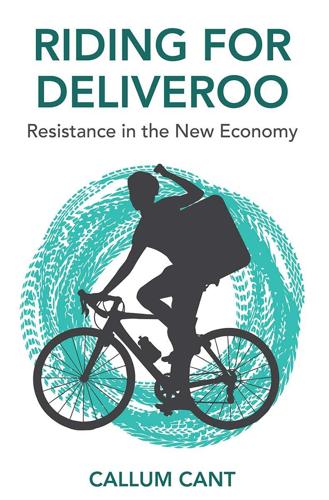
Riding for Deliveroo: Resistance in the New Economy
by
Callum Cant
Published 11 Nov 2019
Some estimates claim that 2.8 million people worked in the gig economy at some point in 2017. Of these, 700,000 earned below the living wage whilst they did so, and 21 per cent worked for food-delivery platforms. This would imply that around half a million workers worked for a food platform at some point in 2017, which intuitively seems very high. See R. Booth (2018) 700,000 gig workers paid below national minimum wage. Guardian. 7 February. www.theguardian.com/business/2018/feb/07/death-dpd-courier-don-lane-tragedy-business-secretary. 17. For an analysis of how this kind of cutting-edge organizing and inquiry actually took place in the early tech industry, see E. Brophy (2006) System error: labour precarity and collective organizing at Microsoft.

The New Snobbery
by
David Skelton
Published 28 Jun 2021
Sectoral bargaining would also enable workers and businesses to agree a minimum floor of rights, including on areas such as sick pay, paid holiday, pensions and basic certainty over hours. The fact that a ‘race to the bottom’ is ruled out means that firms are then more incentivised to differentiate through productive investment in their workforce, innovation and customer retention. Sectoral bargaining would also mean that a new generation of ‘gig workers’ could be included within the system. Labour MP Jon Cruddas has also proposed a number of important ideas to increase the societal importance of less-skilled work, including a special covenant for key workers, with additional entitlements to housing and travel. It is essential that we all look to ensure that work is always seen as fulfilling, secure and a source of dignity and respect.

Co-Intelligence: Living and Working With AI
by
Ethan Mollick
Published 2 Apr 2024
Companies have been experimenting with forms of computerized control over workers since long before this generation of AI. Time clocks, cameras, and other forms of monitoring have been common for over a century, but these approaches kicked into high gear with the rise of pre-LLM AI, and especially the use of algorithms to control work and workers. Think of the gig worker hoping Uber will give them a good stream of customers, despite receiving a low rating from an angry passenger, or the UPS driver whose every minute of driving is scrutinized by an algorithm to see if they were efficient enough to keep their job. Katherine Kellogg of MIT, along with Melissa Valentine and Angèle Christin of Stanford, outlined how these new types of control were different from previous forms of management.

Ours to Hack and to Own: The Rise of Platform Cooperativism, a New Vision for the Future of Work and a Fairer Internet
by
Trebor Scholz
and
Nathan Schneider
Published 14 Aug 2017
The nature of acting is contingent—even the longest-running Broadway musical will come to an end long before the end of an individual actor’s career. The same is true for movies, TV shows, commercial work, recording audio books, and Shakespeare in the Park (or, in his case, Shakespeare in the Parking Lot). Like most gig workers, Dave has multiple sources of income throughout the year—and to supplement them, he also works as a catering bartender. In years when he books more acting work, he might bartend less, but he’s been a steady bartender for a long time. Catering is itself seasonal work. There’s lots to do in December, when rich people or companies are having their holiday parties, but much less in January.

Working Identity, Updated Edition, With a New Preface: Unconventional Strategies for Reinventing Your Career
by
Herminia Ibarra
Published 17 Oct 2023
As we saw in chapter 3, independent work is not only an important way of testing out new career paths but also on the rise as a career choice,8 and relationships with peers are crucial for making it work. An academic study conducted by professors Gianpiero Petriglieri, Sue Ashford, and Amy Wrzesniewski, for example, found that successful professional gig workers take special care to build their “tribe,” a handful of sustaining relationships with peers.9 As one person in their study told them, “My ability to process, develop, and grow as a human being and understand who I am in the work I’m doing comes from the conversations that I have with these folks.
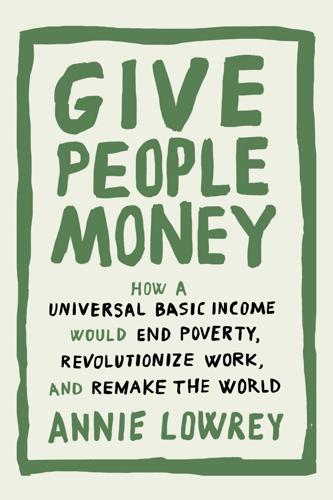
Give People Money
by
Annie Lowrey
Published 10 Jul 2018
More and more politicians and labor experts are arguing that neither label really fits. The government might need to create a new standard for “dependent contractors,” individuals reliant on but not employed by businesses. The government could, for instance, levy a surcharge on businesses using 1099 gig workers. Those funds could pay for unemployment insurance, workers’ compensation, and other minimal benefits. At the same time, Uncle Sam could require on-demand businesses to reimburse workers for basic expenses and pay out the local minimum wage for any hours spent on the job. That would require the businesses to better track their workers’ hours.

Cogs and Monsters: What Economics Is, and What It Should Be
by
Diane Coyle
Published 11 Oct 2021
Whatever we mean by the economy growing, by things getting better, the gains will have to be more evenly shared than in the recent past. In particular, the new technologies transforming life will need to bring wider benefits than they have so far. An economy of tech millionaires or billionaires and gig workers, with middle-income jobs undercut by automation will not be politically sustainable. Biotech or medical innovations from 3D printed organs to personalised cancer treatments cannot be the preserve of only the super-rich. The tech-driven inequalities had already disrupted politics in many countries by destabilising the solid middle.
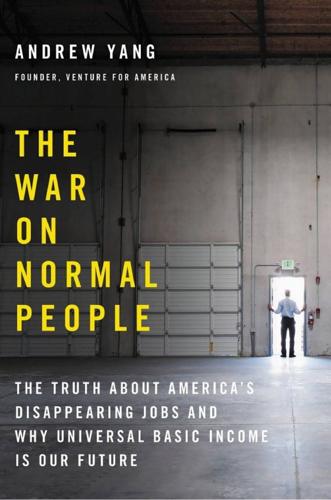
The War on Normal People: The Truth About America's Disappearing Jobs and Why Universal Basic Income Is Our Future
by
Andrew Yang
Published 2 Apr 2018
The costs get a lot higher for senior people with families—my last company was spending more than $2,500 a month on certain people’s insurance plans. If these costs weren’t on our books we definitely would have hired more people. Health insurance also pushes companies to make as many employees as possible into part-time gig workers or contractors. The organizations I ran were generous—my education company made instructors who worked more than 20 hours a week full-time employees and provided benefits accordingly. This was highly unusual in our industry and very expensive—we could do it because we were growing and profitable, and it was always important to me to take care of people.
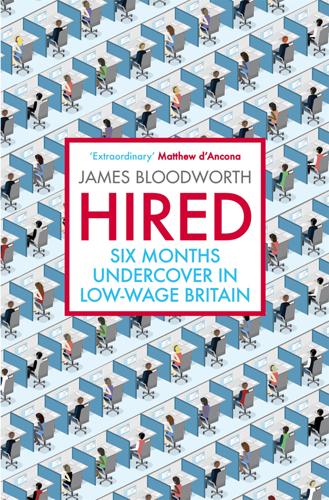
Hired: Six Months Undercover in Low-Wage Britain
by
James Bloodworth
Published 1 Mar 2018
Not to do so would see the company locked out of one of its most lucrative markets. In the weeks after the initial ruling, the Mayor of London Sadiq Khan said the ‘humility’ shown by Uber in light of the decision ‘bodes well’ in terms of the company getting its licence back.33 Some of the grievances of other ‘gig’ workers became more voluble in 2017, too. In July, around 200 delivery drivers, many of them working with companies such as UberEATS and Deliveroo, staged a noisy protest outside the Houses of Parliament after a spate of acid attacks on moped users. ‘No more acid attacks,’ the protesters chanted. ‘Stop acid attacks, bike theft, motorcycle crime.’34 There has been a huge rise in acid attacks in London over recent years,35 with some of those falling victim delivery drivers whose mopeds have been targeted by vicious thieves.
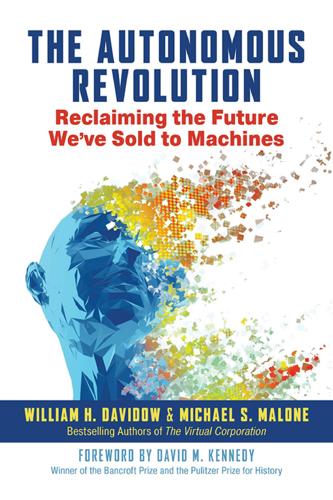
The Autonomous Revolution: Reclaiming the Future We’ve Sold to Machines
by
William Davidow
and
Michael Malone
Published 18 Feb 2020
If we were capable of converting them into utilities in the early twentieth century to better serve the public interest, we should be capable of defining the new utilities of the future, perhaps creating them from existing private enterprises, and in the process determining effective ways to regulate their behavior. This chapter also raised the issue of the few who control these new enterprises becoming very wealthy by living off the labors of part-time, contract—“gig”—workers. The Autonomous Revolution will tend to increase this wealth concentration and exacerbate wealth disparity. If you believe wealth concentration is a problem, and we do, there are tax solutions to this problem. Again, the new forms of the Autonomous Revolution will require new rules and tools.
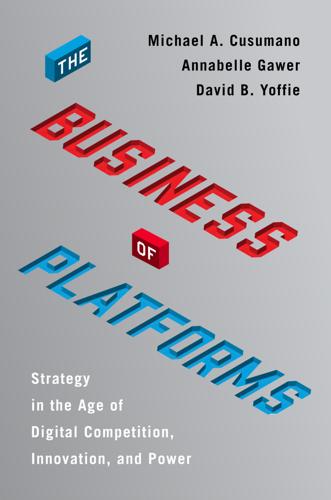
The Business of Platforms: Strategy in the Age of Digital Competition, Innovation, and Power
by
Michael A. Cusumano
,
Annabelle Gawer
and
David B. Yoffie
Published 6 May 2019
Similarly, platforms will need to evolve their workforce rules and benefits, and to adopt flexible work rules that will be consistent with local regulations, which will have to accommodate both full-time employees and independent contractors. We hope many countries will also adapt their labor regulations to accommodate the digital economy and more part-time “gig” workers. In any case, platform companies, like firms in the traditional economy, have to learn to value the benefits of a stable and capable workforce and figure out how to incorporate better working conditions into their strategies and business models. Contractors who work full-time for a platform should be full-time employees, regardless of the local, state, or national rules.
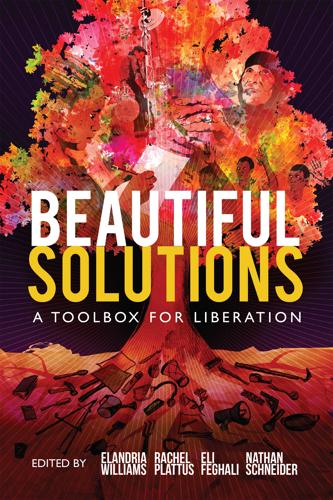
Beautiful Solutions: A Toolbox for Liberation
by
Elandria Williams, Eli Feghali, Rachel Plattus
and
Nathan Schneider
Published 15 Dec 2024
LEARN MORE WEBSITE “The Living Forest Declaration” by Kawsak Sacha. kawsaksacha.org WEBSITE “Sarayaku: In Defense of Territory” by the Centre for Justice and International Law, The Amazon Conservation Team, and Kichwa Indigenous Community. amazonteam.org/maps/sarayaku-en VIDEO “Children of the Jaguar” by Amnesty International. (2013) youtu.be/Ma1QSmtuiLQ STORY ARTIST AND FREELANCER CO-OPS IN EUROPE Slick Steve and the Gangsters (members of Doc Servizi) at Venice Carnival in Italy in 2019. Copyright Diego Feltrin, used with permission. ARTISTS ARE SOME OF THE ORIGINAL GIG WORKERS. The word “gig” comes from “engagement,” a performance associated with a single contract—one-off and occasional. Working in the fields of arts and entertainment means dealing with multiple clients, inconsistent employment, and multiple workplaces. Because of these conditions, artists often face economic challenges.
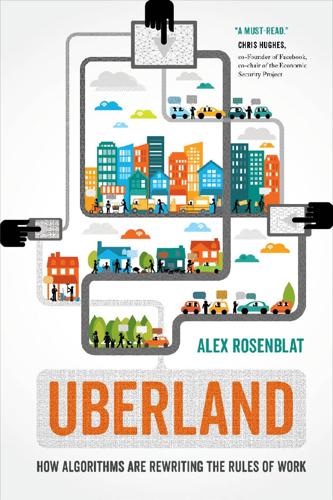
Uberland: How Algorithms Are Rewriting the Rules of Work
by
Alex Rosenblat
Published 22 Oct 2018
Other drivers value a “good bad job” compared to their other, non-Uber options.18 These diverse motivations and contexts demonstrate why Uber’s impact on work is varied; they also help explain why the dissent animating a vocal minority of Uber’s drivers isn’t shared more widely among the driver workforce. HOBBYIST WORKERS Big differences separate those who financially rely on gig work (56 percent of workers surveyed) and “casual” gig workers (42 percent), who report that they could live comfortably without the additional income, according to a Pew Research Center survey published in 2016.19 But what starts off as supplementary work can turn into a full-time job. David Aguirre, who drives for Uber in Houston, Texas, speaks of a fairly common experience when he says to me, in 2018, “This started as a side job for me, but I started doing it full time in September [2017] when the company I used to work for went out of business.”
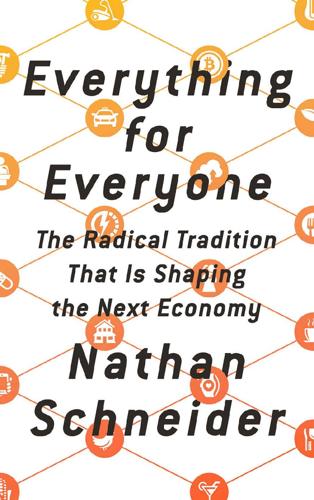
Everything for Everyone: The Radical Tradition That Is Shaping the Next Economy
by
Nathan Schneider
Published 10 Sep 2018
That year, too, a soft-spoken German entrepreneur named Felix Weth founded a fair-trade, online marketplace called Fairmondo, cooperatively owned by its buyers, sellers, and workers alike. By October 2014, Janelle Orsi of the Sustainable Economies Law Center, in Oakland, promulgated a cartoon video online that called for “the next sharing economy”—a sharing of cooperative ownership. Orsi was also helping to design the bylaws for Loconomics Cooperative, a gig platform owned by gig workers. Small web-development shops were finding worker-ownership a congenial means of attracting talent and distinguishing themselves in a crowded industry.15 Three people I met in Paris at OuiShareFest that summer were gesturing in the same directions during the months afterward. Venture capitalist Lisa Gansky had been nudging sharing-economy startups to understand and imitate cooperative tradition.
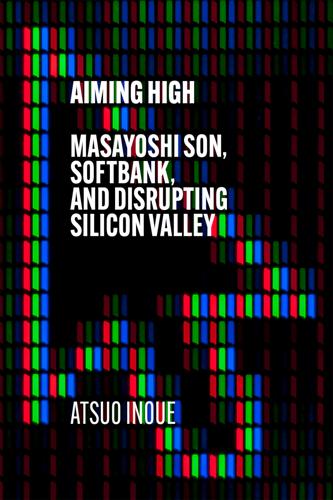
Aiming High: Masayoshi Son, SoftBank, and Disrupting Silicon Valley
by
Atsuo Inoue
Published 18 Nov 2021
With a short-term and flexible contract, you can work from a place close to your house, you know you can not concentrate on your work at home when your family members and children are making noise, that’s tough. You have to have Zoom meetings so often, too. In this sense, the new sharing-economy, such as WeWork, shared offices, shared cars, shared travel, or gig-workers, food delivery, Zoom as well, brings about a new lifestyle and work style, and the pandemic is accelerating the penetration of the new styles for sure. So, in post-COVID, that (implying the lifestyle and working style before the pandemic) will be reviewed as a matter of fact.’ Son himself is confident, citing the T-Mobile and Sprint merger as an example of America leading in the technology sector going forward as T-Mobile has become the world leader in 5G, with a successfully rehabilitated and rebranded Sprint becoming the pride of America.

Capitalism and Its Critics: A History: From the Industrial Revolution to AI
by
John Cassidy
Published 12 May 2025
One potential solution to this problem, Bowles and Carlin said, was to switch to teamwork and reputation-based rewards, of the sort common in open-source and open- science settings. A more draconian option was to introduce Amazon-style surveillance of employees. A third option was to abandon the traditional corporate structure and hire gig workers who get paid on a piecework basis. “By reducing the share of economic activity over which capitalist firms have a comparative advantage, the first and the third solution—team-based open source and the gig economy—shrink capitalism,” Bowles and Carlin wrote. “The second—Amazon-type monitoring—has convinced many that capitalism should be shrunk.”55 Bowles and Carlin weren’t endorsing the pernicious practices of platform companies like Uber and Lyft.
…
George, Richard George V (king) Georgescu-Roegen, Nicholas; bioeconomics of; death of; early life of; on economic development and growth; “Energy and Economic Myths”; The Entropy Law and the Economic Process; at Vanderbilt University Georgescu-Roegen, Otilia German Workers Educational Association Germany; banks in; Britain and; business financing in; chemical industry in; colonies of; Communist Party in; Constituent National Assembly in; East; economy of; gold standard and; government spending in; Hitler made chancellor of; industry in; inflation in; labor unions in; Nazi; proclamation of republic in; Social Democratic Party in; Social Democratic Workers Party in; Treaty of Versailles and; unemployment in; Weimar Getachew, Adom gig mills gig workers Gilded Age Gilded Age, The (Twain and Warner) Gilman, Charlotte Perkins Gini coefficient Gini, Corrado Gladstone, John Gladstone, William Ewart Glasgow Glass-Steagall Act Global Commission on the Economy and Climate Global Financial Crisis Global Inequality (Milanović) globalization; Amin on; backlash against; Communist Manifesto on; inequality and; offshoring and onshoring of jobs in; and outsourcing of production; protests against; Rodrik on; Stiglitz on Globalization and Its Discontents (Stiglitz) Globalization Paradox, The (Rodrik) Glyn, Andrew Goebbels, Joseph Goethe, Johann Wolfgang von gold; sterling and gold standard Goldman, Emma Goldman Sachs Goldwater, Barry González, Rodolfo Goodman, Peter S.

We're Not Broken: Changing the Autism Conversation
by
Eric Garcia
Published 2 Aug 2021
For autistic and other disabled people, every bad decision becomes a referendum on your right to live independently. Despite jokes about “adulting,” nobody is going to force my neurotypical friends to move back in with their parents if they forget to do their laundry. If they need a nanny to care for their kids, a maid to clean their house, or a gig worker to do daily tasks, they won’t be seen as incomplete humans. Autistic people’s use of these services is no more of a measure of their incompleteness as humans than people who use wheelchairs are failures because they cannot walk. To be disabled is to constantly fear that any bad decision you make will cost you your autonomy, particularly when there’s a historical precedent for institutionalization.

MegaThreats: Ten Dangerous Trends That Imperil Our Future, and How to Survive Them
by
Nouriel Roubini
Published 17 Oct 2022
Behavior that fueled the 2008 financial bubble and bust will persist, but on steroids. Millennials who were shafted in the global financial crisis—they lost jobs, income, and wealth—are being duped once again, this time under the banner of financial democratization. It’s a new name for the rope that part-time gig workers can use to hang themselves. Millions have opened investment accounts on their mobile phones, where they leverage scant savings to speculate on flaky investments like meme stocks and crypto scams. Using their keyboards to close the stubborn wealth gap is doomed to fail, and to turn frustration to anger.

The Glass Half-Empty: Debunking the Myth of Progress in the Twenty-First Century
by
Rodrigo Aguilera
Published 10 Mar 2020
The unluckiest of the bunch will end up working in the so-called “gig economy”, where they will be legally treated as self-employed entrepreneurs when in reality they are little more than serfs to a taxi or takeaway app,11 often juggling more than one of these jobs while getting no paid holiday entitlement, no paid sick leave, and no employer pension contributions either. But the gig economy is only the tip of the iceberg of modern worker precarity, mostly because it is most commonly associated with an online intermediary. In fact, the grand majority of “gig” workers in the Western world work through offline intermediaries like temp agencies, often working de facto jobs for a single employer without any of the benefits of a formal contract. Although gig economy employers (and sadly some governments) boast about the benefits of flexibility, it should be obvious that the main incentive for employers is cost: in a country like the US with a corporatist social protection regime — that is, one tied to holding down a formal job — employers can avoid paying benefits that can amount to as much as 30% of an employee’s wage.
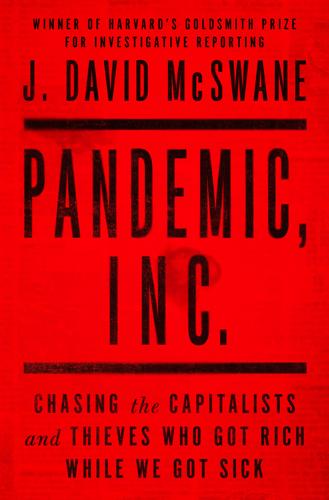
Pandemic, Inc.: Chasing the Capitalists and Thieves Who Got Rich While We Got Sick
by
J. David McSwane
Published 11 Apr 2022
Because the federal government had guaranteed the loans, those lenders had almost no risk and all upside to approve as many loans as possible. The rules of the program incentivized speed and disincentivized basic due diligence, which could have curtailed pervasive fraud. Two companies, Blueacorn and Womply, came out of nowhere and launched savvy marketing campaigns to attract sole proprietors, gig workers such as Uber drivers, and small businesses to apply for loans that paid out quickly. Together the two would account for a third of all PPP loans approved, collecting as much as $3 billion in fees from the federal government. Blueacorn was formed just as the loan program presented the opportunity.
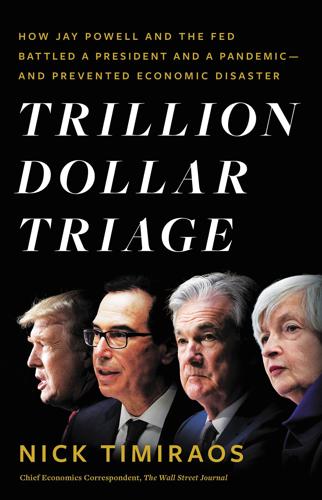
Trillion Dollar Triage: How Jay Powell and the Fed Battled a President and a Pandemic---And Prevented Economic Disaster
by
Nick Timiraos
Published 1 Mar 2022
Over the next two days, Mnuchin secured a little-noticed provision that preemptively authorized the FDIC to revive at any point in 2020 its crisis-era program of backstopping bank-issued debt and non-interest-bearing deposits that exceeded the $250,000 limit. Democrats secured a significant expansion of federal payments to the unemployed on two fronts. First, a new “pandemic unemployment assistance” program would provide weekly benefits to millions of people who had lost their jobs but would not normally be eligible, including self-employed or “gig” workers. Second, the program temporarily added $600 per week in benefits through July—a huge bump up from the $25 per week that Congress approved after the 2008 crisis. At one point, Sen. Ron Wyden, a Democrat, showed Mnuchin how much a fourth month of unemployment benefits would cost using the calculator feature on his iPhone.

Filterworld: How Algorithms Flattened Culture
by
Kyle Chayka
Published 15 Jan 2024
Just as early Western coffee shops in the seventeenth century provided a venue for the proliferation of democratic and egalitarian ideas, by mingling different classes in one physical space, the cafés of the 2010s also created a form of social organization. They offered a casual gathering point for the growing economy of “gig workers” and digital creative laborers, people whose schedules didn’t align with the usual nine-to-five of the traditional office, and who lacked the infrastructure of an office entirely. (I was very much one of those people, drifting between various Brooklyn cafés to write piecework articles, getting to know the faces of other regulars.)
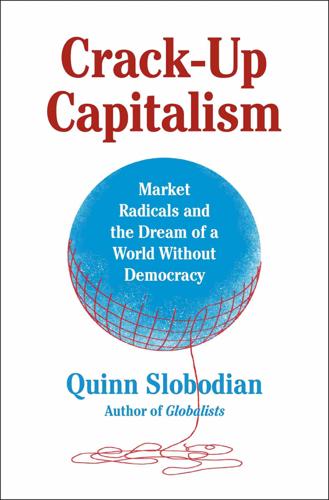
Crack-Up Capitalism: Market Radicals and the Dream of a World Without Democracy
by
Quinn Slobodian
Published 4 Apr 2023
The metaverse, as one critic has astutely observed, is probably best thought of as a cubicle.76 The private government of corporations has little space for the alternative visions of collectives, other than those that reproduce its own dominance. As one of the foundational texts of tech criticism notes, Silicon Valley often forgets its Hegel at its own risk.77 The German philosopher taught that the master is always dependent on the slave. Neither island nor cloud can exist without its underclass. Beyond the masses of app-mediated gig workers, even the vaunted artificial intelligence programs work only because of the often repetitive routines and efforts of labor both skilled and unskilled.78 From Honduras to Dubai, the waged service class is the easiest for the visionaries to forget and the hardest for them to live without. When the COVID-19 pandemic broke out, Singapore initially thought it had flattened the curve, until it was hit by a wave of infections from the migrant workers living in cramped quarters away from the public eye.

System Error: Where Big Tech Went Wrong and How We Can Reboot
by
Rob Reich
,
Mehran Sahami
and
Jeremy M. Weinstein
Published 6 Sep 2021
Grassroots efforts by researchers and tech workers are increasingly focused on achieving socially beneficial outcomes from technology. The AI researcher Joy Buolamwini founded the Algorithmic Justice League to call attention to the often-malign effects of algorithms on marginalized populations. Tech workers are organizing within their own companies to bring social protections to gig workers. In the wake of the livestreamed Christchurch massacre, nongovernmental organizations around the world banded together with governments to create the Christchurch Principles, an effort to promote social media governance that better supports democracy and human rights. Universities in the United States have launched a public interest technology consortium, creating new pathways for young people to work on addressing social problems with technology.

Border and Rule: Global Migration, Capitalism, and the Rise of Racist Nationalism
by
Harsha Walia
Published 9 Feb 2021
The Covid-19 crisis, therefore, lays bare an even larger theater of war—one that the mainstream media largely ignores. The US government has accelerated border closings, imposed more barriers to asylum seekers, and expanded immigrant detention. Laws protecting workers are being shunned, and retail and warehouse workers for Amazon and Instacart, gig workers, and laborers in the meatpacking industry fight for their lives as infection rates rise exponentially. Indian country has become the latest coronavirus epicenter in the US, thanks largely to the federal government’s continued legacy of neglect. Prisoners and prison staff are the most vulnerable, with 80 percent of the prisoners at Ohio’s Marion Correctional Institution testing positive for the virus.

Work Won't Love You Back: How Devotion to Our Jobs Keeps Us Exploited, Exhausted, and Alone
by
Sarah Jaffe
Published 26 Jan 2021
Author Corey Pein recalled asking a VC if startup founders were capital or labor. His “cheerfully cynical” reply was this: “For every Zuckerberg there’s one hundred guys who basically got fired from their startups. They aren’t capital. They’re labor.” The wannabe Zuckerbergs are their own kind of gig worker, scrambling individually to make a buck, just on a grander scale. 41 Rather than leave to become startup founders, some tech employees have instead taken a page from the Tesla factory workers, or indeed, from the workers who serve them those catered lunches: they’re organizing. The Tech Workers Coalition (TWC) began with an engineer and a cafeteria worker turned organizer who challenged a few of the shibboleths of Big Tech—namely, the idea that different kinds of workers have no interests in common, and the assumption that the programmers have more in common with the Zuckerbergs of the world than they do with the working class.
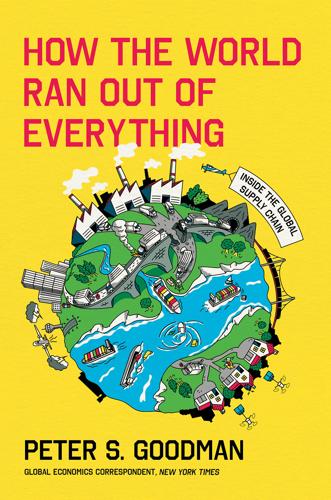
How the World Ran Out of Everything
by
Peter S. Goodman
Published 11 Jun 2024
Much of the display space was dedicated to technological offerings that diminished the need for people and their profit-diluting foibles. Robot manufacturers demonstrated their latest models, touting them as efficiency-boosting augmentation to warehouse workers. Staffing companies beckoned with services promising to make it easier to eliminate full-time employees, replacing them with part-time gig workers. Driverless trucks and drones would assume central responsibility for completing the final leg of the supply chain journey. “It’s hard to get people motivated to do this work,” said Kary Zate, senior director of marketing communications at Locus Robotics, a manufacturer of so-called autonomous mobile robots—basically, carts that roll through warehouses, accompanying humans who pluck goods off shelves.

Power Play: Tesla, Elon Musk, and the Bet of the Century
by
Tim Higgins
Published 2 Aug 2021
In theory, it would save money on having to expand delivery centers; in practice it would require an army of people to physically take the vehicles to customers. There was no way they were ready yet to do 20,000 home deliveries. Kim, who had worked to improve the online buying process, turned to members of his sales staff who had worked at Amazon and Uber, for their expertise in tracking packages and hiring gig workers. Musk wanted cars delivered in covered trucks. Kim and chief designer Franz von Holzhausen huddled to develop the look of the carriers until it became clear it would be too costly and take too much time. Instead, Kim proposed to Musk that employees simply drive cars to buyers’ homes and hand over the keys.
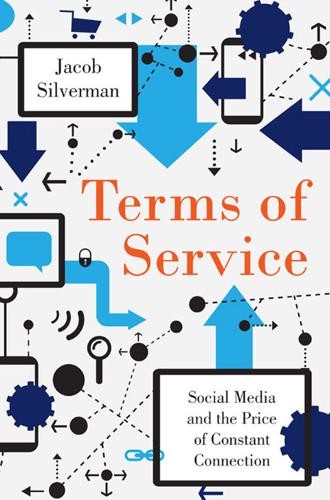
Terms of Service: Social Media and the Price of Constant Connection
by
Jacob Silverman
Published 17 Mar 2015
It’s an idea that’s had support from diverse corners—liberals and leftists often cite it as a pragmatic response to widespread inequality, while some conservatives and libertarians see it as an improvement over an imperfect welfare system. As the number of long-term unemployed, contingent, and gig workers increases, a universal basic income would restore some equity to the system. It would also make the supposed freedom of those TaskRabbit jobs actually mean something, for the laborer would know that even if the company cares little for his welfare or ability to make a living, someone else does and is providing the resources to make sure that economic precarity doesn’t turn into something more dire.

Fancy Bear Goes Phishing: The Dark History of the Information Age, in Five Extraordinary Hacks
by
Scott J. Shapiro
The solutionist response to famines is irrigation systems. To global warming, reengineering the environment by, say, seeding the oceans with CO2-absorbing algae. Nuclear disasters? Construct remote-controlled drones to maintain reactors and remove any accidental fallout. And labor-market inefficiencies? Websites that enable gig workers to manage their own schedules. A classic example of solutionism is the article published by Wired in 2012: “Africa? There’s an App for That.” Great news! We can reverse centuries of imperialism, revolution, and poverty with our cell phones. Solutionism is ubiquitous in cybersecurity. Every cybersecurity firm promises that its technology will keep your data safe.

Rentier Capitalism: Who Owns the Economy, and Who Pays for It?
by
Brett Christophers
Published 17 Nov 2020
As Kenney and Zysman wrote in 2016: Uber converts taxi company employees or former medallion owners into contractors, whose access to income is through the Uber platform … Are these contractors mini-entrepreneurs, employees in all but name, or yet something else? … Many are now concerned that rather than creating a new source of productivity we are legitimating a new form of putting out. Can Uber drivers be self-supporting contractors in a 1099 economy rather than stable workers in an employment economy, or are they just extremely vulnerable gig workers? And, more broadly, as Ruth Collier asks, what will be the consequences for mass politics and political structures? Are we generating labor market flexibility, or a precariat that resembles a cyberized Downton Abbey replete with a small elite composed of the platform owners and a new and sizable underclass?

The Code: Silicon Valley and the Remaking of America
by
Margaret O'Mara
Published 8 Jul 2019
Already facing criticism for the pressure their growth had placed on the housing market, Facebook and Google announced that they would build apartments and town houses to house their employees nearby, company towns in the mold of Pullman and Ford, updated for the twenty-first century. As if in call-and-response to the new welfare capitalism, campaigns to organize tech workers gained momentum, pushing to expand white-collar tech’s perks and pay to its massive, contingent workforce, the shuttle-bus drivers and gig workers and coders for hire. Drive beyond the sandstone-and-tile shimmer of Stanford, the obelisk of the Hoover Tower (still pointing straight up!), and the Stanford Shopping Center, developed on university land back in the 1950s and now home to every designer brand imaginable. Across the street, through a shaded drive, you’d find the Vi, the commodious and luxe retirement destination of the men and women who’d been in the Valley from the very start

Palo Alto: A History of California, Capitalism, and the World
by
Malcolm Harris
Published 14 Feb 2023
In New York City, community members and reporters found Uber and its effects on the market responsible for a wave of suicides by professional taxi and black-car drivers, at least eight in 2018 alone.12 This was one of the first large battles in what was, in retrospect, a struggle over the nature of work. As we know, the employment of temps and contractors has been growing for decades, especially in the Bay Area, but Uber took it a step further, automating as much of the recruitment, sign-up, and onboarding processes as possible—forget training. These gig workers were barely even contractors. In terms of their relation to the company, they were more like users. The term underemployed usually applies to people who are working at jobs that are not as highly remunerated as their skill set suggests they should be. But it can also describe a shaving down of job quality.

J.K. Lasser's Your Income Tax 2022: For Preparing Your 2021 Tax Return
by
J. K. Lasser Institute
Published 21 Dec 2021
The payments must be conditioned on the salesperson's entering into a covenant not to compete with the company for at least one year after termination. The amount of the payment must be primarily based on policies sold by (or credited to) the salesperson during the last year of the services agreement or on the period for which such policies remain in force after the termination. Gig worker Whether you are an employee or independent contractor depends on your worker classification for federal income tax purposes. If you are an independent contractor, then your net earnings from full-time, part-time, temporary, or sideline work is subject to self-employment tax, regardless of the form in which you are paid (e.g., cash, property, goods, virtual currency) and whether or not you receive an information return (e.g., Form 1099-NEC, Form 1099-K).
…
See also Capital gains casualty or theft, 433, 435–37 character of, 605 deadlines for realizing, 579 from involuntary conversion, 447–50, 453–54 on ISOs, 52 nonqualified use of residences and, 566 on property sales, 115–19, 121–22, 133, 138 on Qualified Opportunity Fund, 122 on qualified small business stock sales, 121 for real estate investors, 602, 605 recognized, 1019 on residence sales, 555, 562, 566, 571–72, 576 Section 1202 gains, 85, 116, 117, 122, 613 Section 1237 gains, 597 Section 1250 gains, 11, 85, 113, 116–18, 123, 498, 573, 613, 769, 770, 1020 on short sales, 581–82 short-term, 582–83, 1020 on short-term obligations, 100 traders' reporting of, 591, 597 Gain (or Loss), Exclusion, and Taxable Gain, 566, 571, 577 Gambling, 318–20, 456, 542–43 Gasoline taxes, 404 Gas wells, 305 General business credit, 719, 1017 General Depreciation System (GDS), 745 General public, food or beverages for, 473 General sales tax, 405 Generation-skipping transfer (GST) tax, 689 Gift loans, 108, 109 Gifts of appreciated property, 683 basis of property received as, 136–40 of business property, 771 from employers, 41 and gift tax, 683 as income, 320 of income interests in trust, 374 of installment notes, 152–53 losses on residences acquired as, 576 mutual fund shares as, 615 of passive interests, 309 self-employed income and, 703–4 sponsorship, 647 strike benefits as, 43 U.S. savings bonds as, 105 Gift tax, xxix, 136–37, 621–22, 682–86, 806, 1017 Gift tax credit, 684 Gig workers, 783 Going-concern value, 751 Golden parachute arrangements, 41 Goodwill, 750 Government benefits, 488 Government employees, 200–201, 345, 661 Government payments, 541 Government services, 408 Grace period, for FSA fund use, 78, 81 Graduate assistants, 619 Graduated payment mortgages, 393 Grandchildren, 485 "Grandfathered" home acquisition loans, 387 Grandparents, 485 Grantor trusts, 686, 1017 Grants, 434, 619, 668 Great-grandchildren, 485 Green cards, 29 Groceries, 75, 472 Gross income, 2–3, 344–48, 487, 1017 Gross profit, 147 Gross receipts, 699, 1017 Ground rents, 393 Group-term life insurance, 38, 46, 57, 64–66, 72, 336, 1017 GST tax (generation-skipping transfer tax), 689 Guam, 667 Guaranteed salaries, 331–32 Guarantor losses, 158 Guardians, 29, 782 H Half-year convention (MACRS depreciation), 742–43, 760–61 Half-Year Convention–150% Rate, 745 Half-Year Convention–Straight-Line Rate, 746 Hardest Hit Fund, 386, 393, 405 Hard fork, 594 Hardship distributions, 192, 196 Hardship waiver of penalty, 548 Hazard mitigation program, 449 HCTC (health coverage tax credit), 534 HDHPs.